- JAPANESE
- LANGUAGE
X
 THAT IS GOOD
THAT IS GOOD
To get to Koguchi, we walked along a mountain path called Kogumo start of the ascent is just beside the Shimoji-bashi bus stop, and it is about 15 km to the next inn. It was a long way, but considering the ups and downs of the first two days, it was a very gentle and easy trail to climb and walk.
The “Hyakken gura” has a great view.
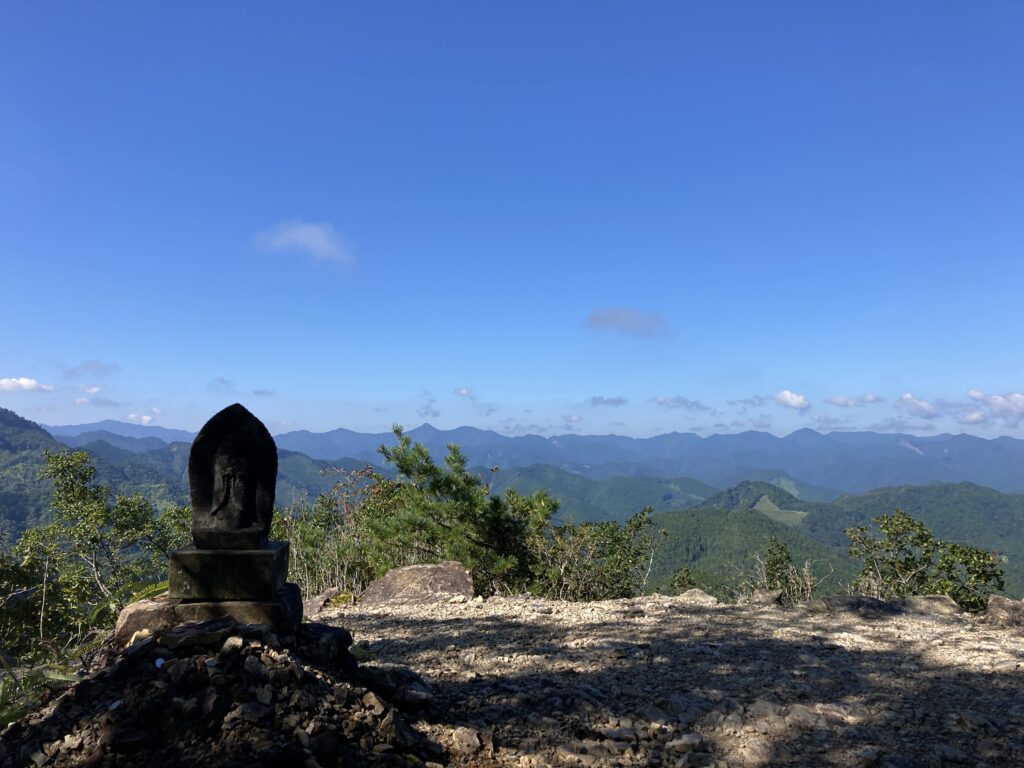
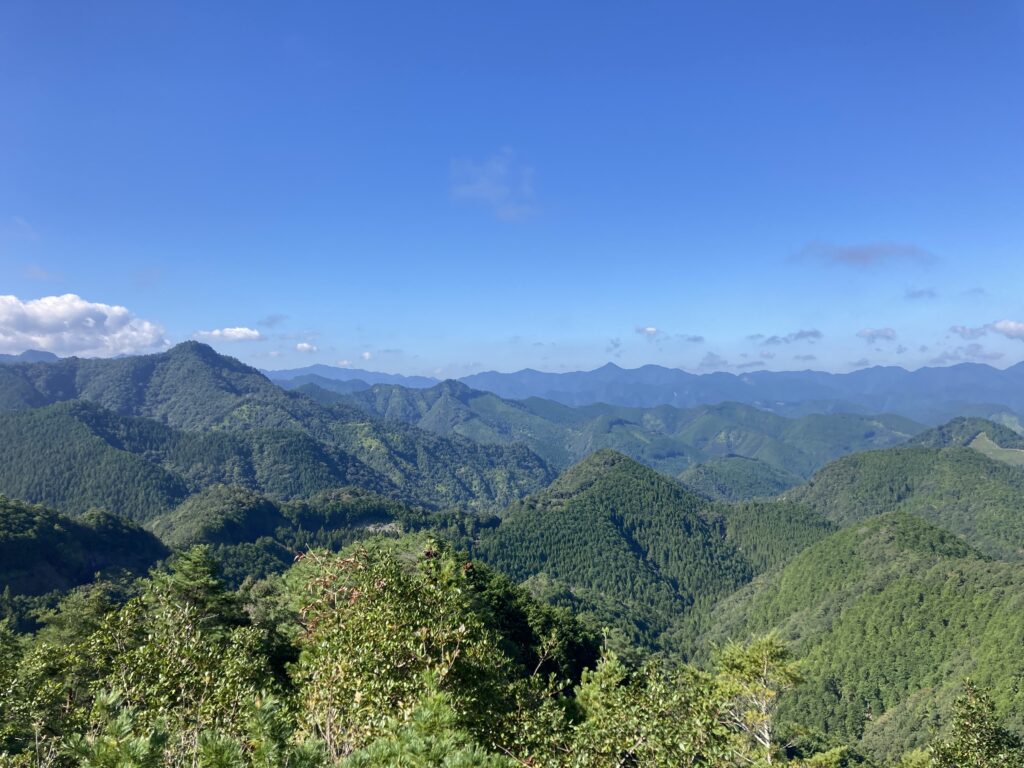
Just before descending to the village of Koguchi, there is Kotohira-san, which has a nice view of the village.
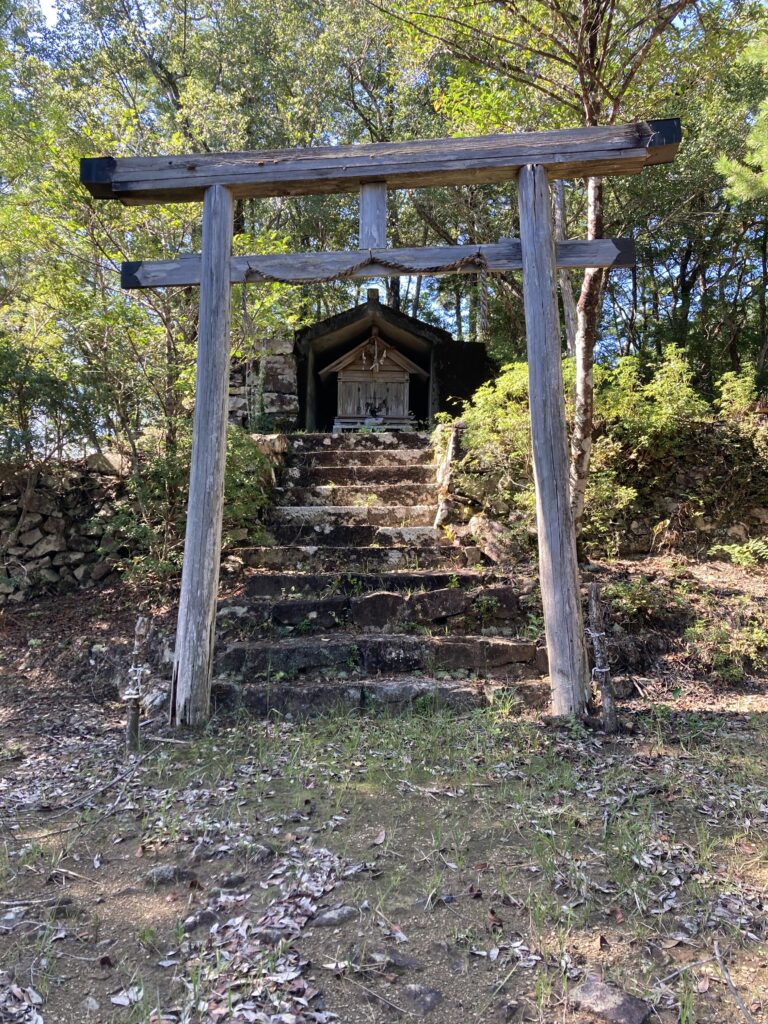
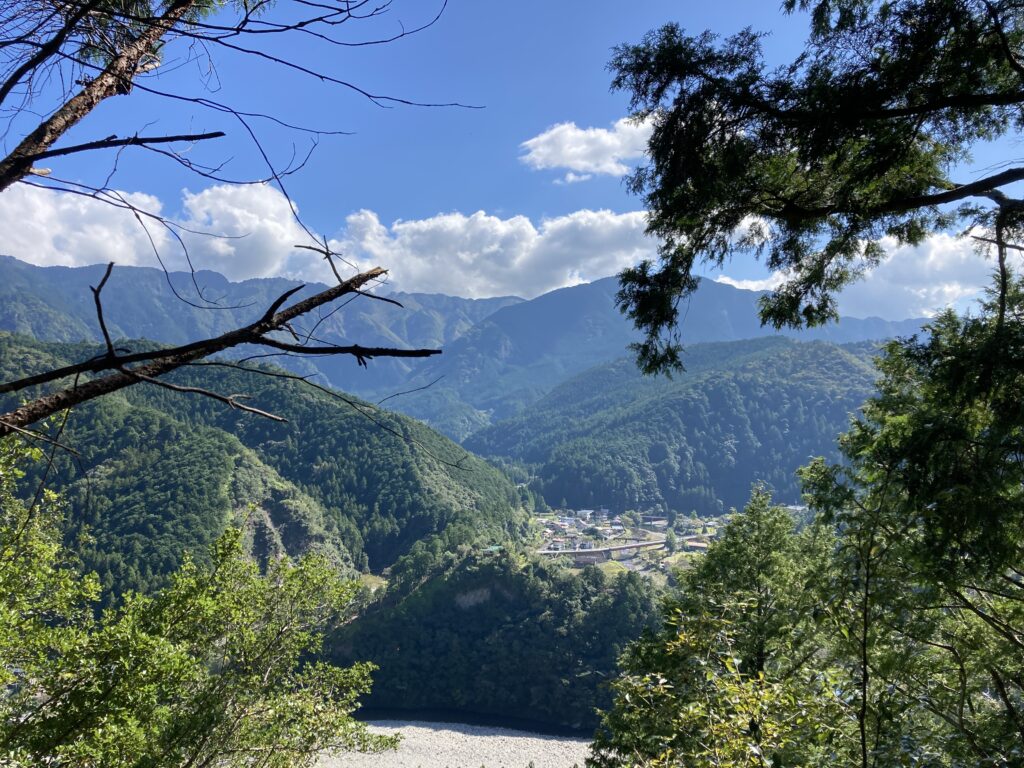
We arrived at the peaceful village of Koguchi with plenty of time to spare.
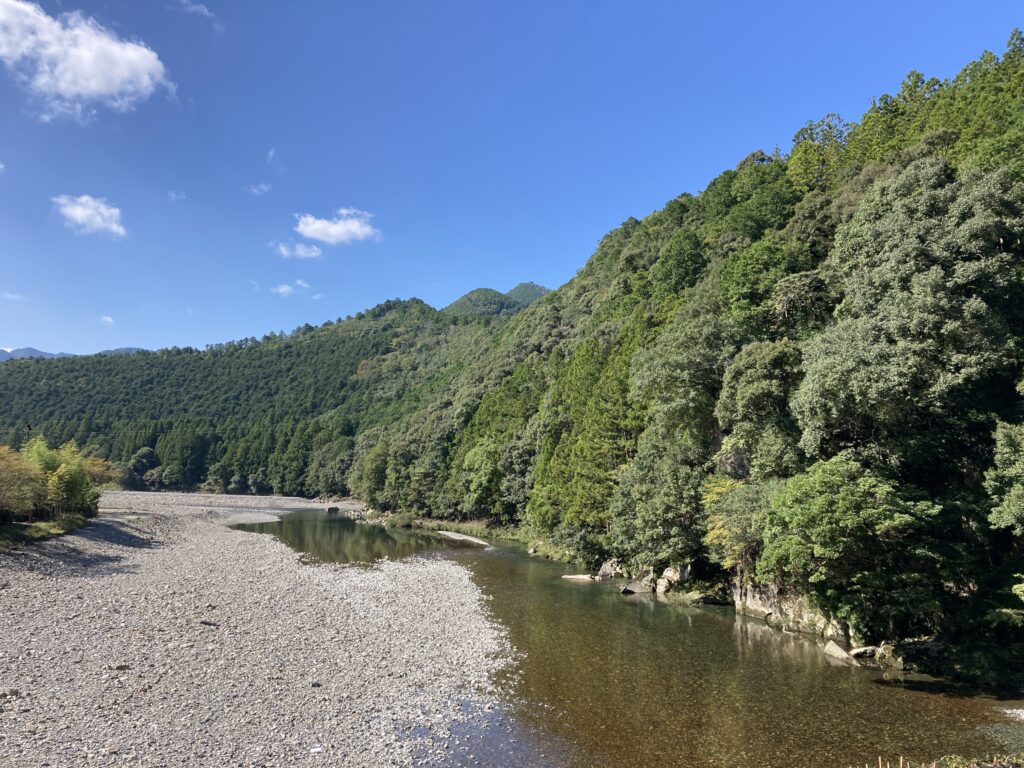
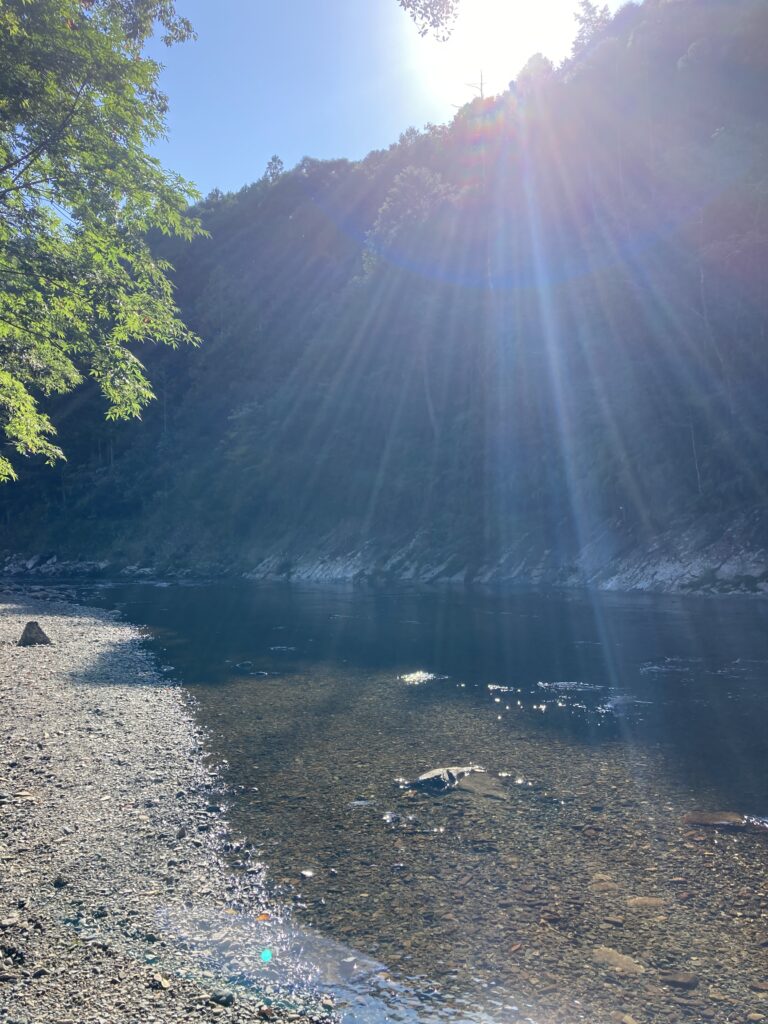
However, there are only two lodges in this small area, so it is best to plan ahead and secure them well in advance.
In ancient times, emperors and aristocrats paid homage to the Kumano Hayatama Taisha Shrine by riverboat from Hongu, but today, boats only go downstream from the small entrance to the Kumano River, about halfway down the river.
We were lucky enough to be able to take a riverboat this time, so from here we took the boat all the way down the Kumano River. This riverboat is often cancelled due to the amount of water and weather, so we thought of it as a plan B, but this time we were lucky.
(This page is only in Japanese. And reservations can only be made by phone or fax. Open from March to November.)
If you can’t or won’t take a boat, you will have to walk the “Ohgumo Torigoe”, a steep mountain path that takes you over a pass that, as the name implies, is like going through the clouds, and is considered to be the most difficult course in the entire Nakahechi route to Kumano Nachi Taisha Shrine. On the other hand, it is the most recommended course for those who like to walk in the mountains.
By the way, among the World Heritage sites, the Kumano River is the only one in the world where a “river pilgrimage route” is registered.
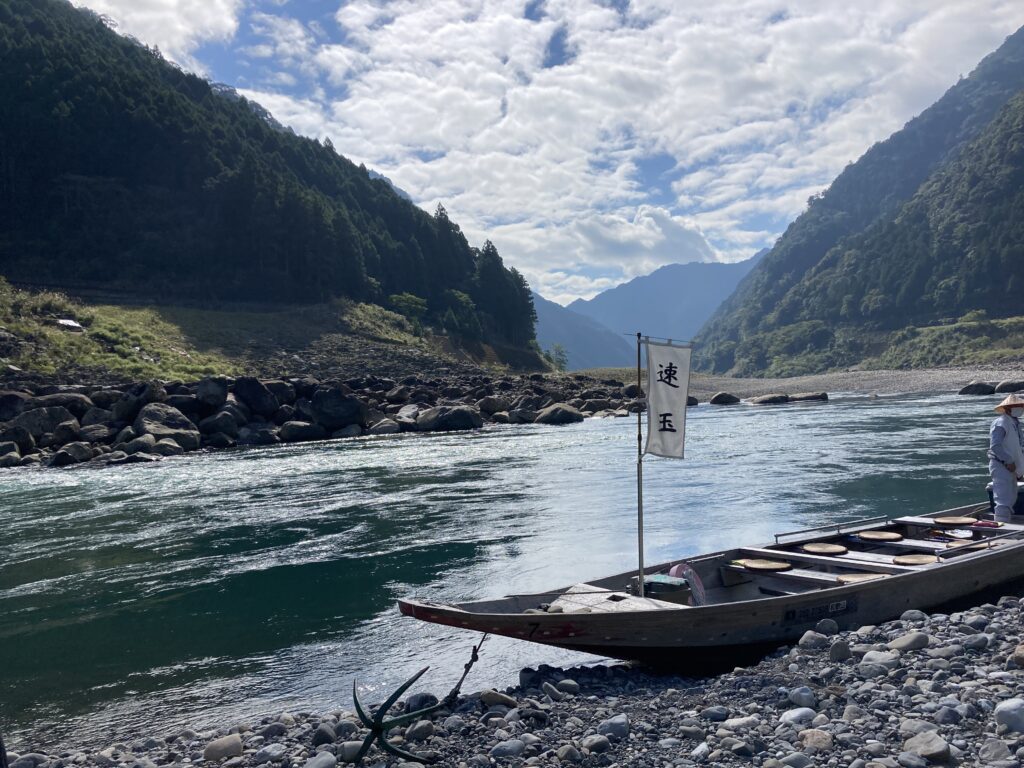
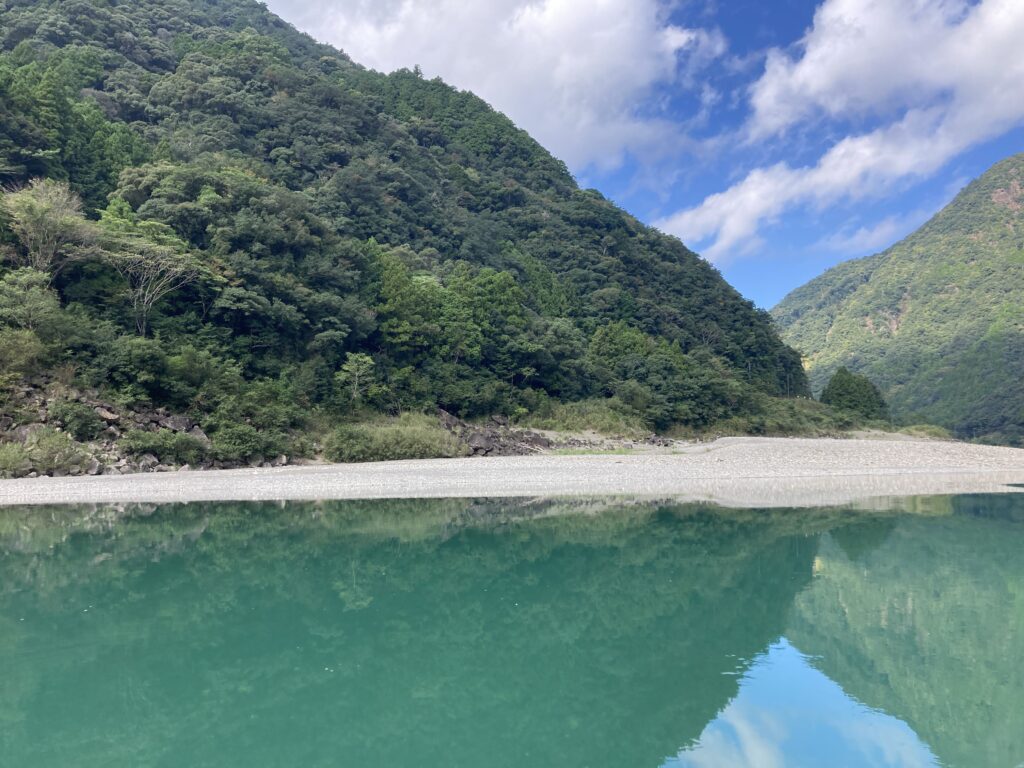
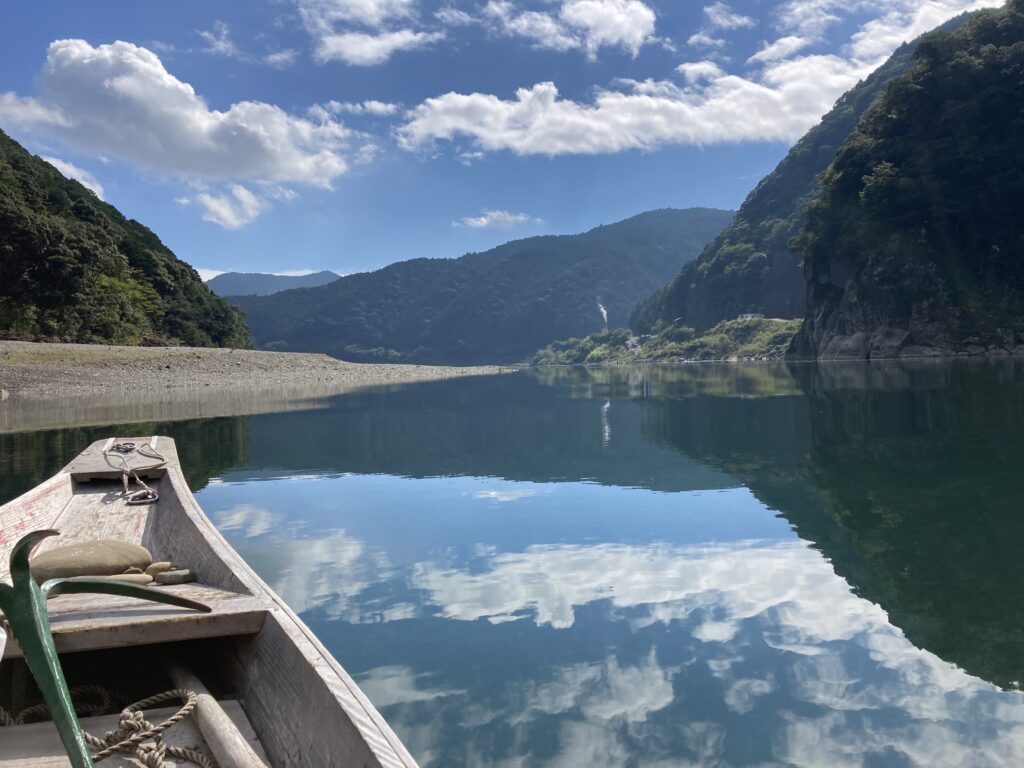
During the boat ride, the boatman told us about the land and history of the area, and played a traditional flute for us to enjoy.
In this way, we were able to reach Kumano Hayatama Taisha Shrine without much walking.
It is said that the Kumano Hayatama Taisha shrine was built here to worship the Kumano Gongen who descended from the Gotobiki rock at the Kamikura Shrine, a branch shrine of the Kumano Hayatama Taisha, and it is believed that the movement of water, the root of life, was deified there. For your information, “Gotobiki” is the dialect name for toad in this area, and indeed, a huge stone reminiscent of a toad is enshrined as the deity’s body.
This Gotobiki Rock at Kamikura Shrine is said to be the first holy place where Kumano Gongen descended before it was enshrined as Kumano Sanzan.
The timing of our visit was the Kumano Hayatama Grand Festival (October 15 and 16 every year), an annual festival of the Kumano Hayatama Taisha Shrine, which is designated as an Important Intangible Folk Cultural Property of Japan. Because of covit-19, we were not able to see the rituals that conclude the festival, such as the Mifune-Sai and the burning of the ashes, but I still felt the sacredness of these rituals, which have been dedicated to prayers since ancient times.
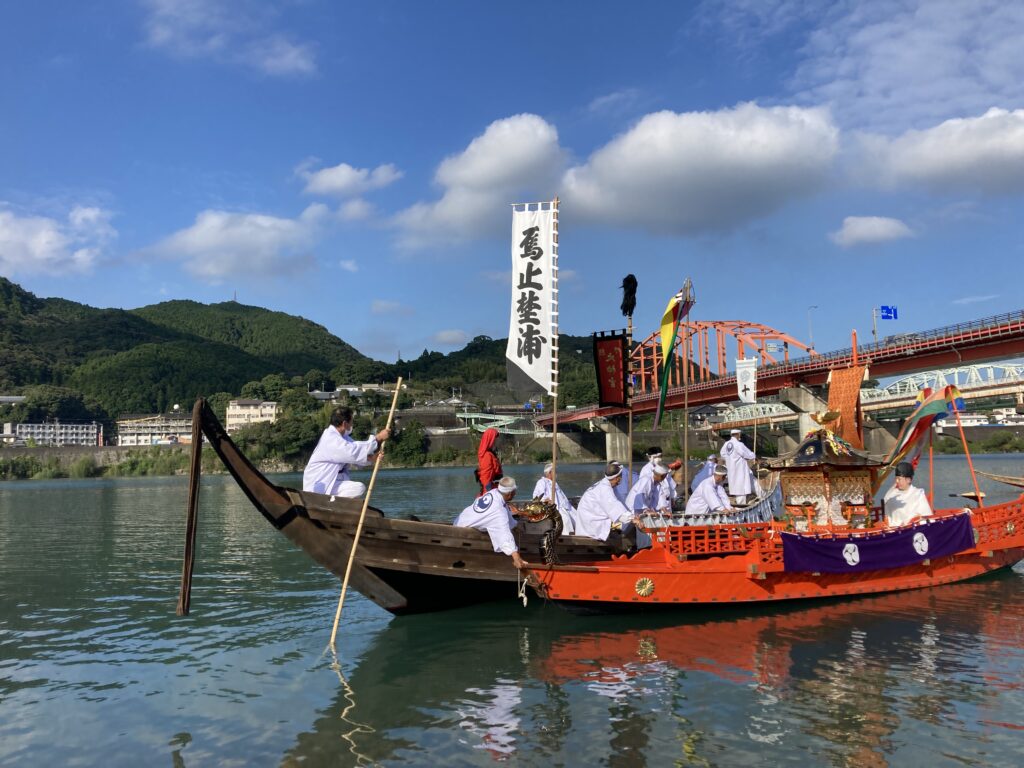
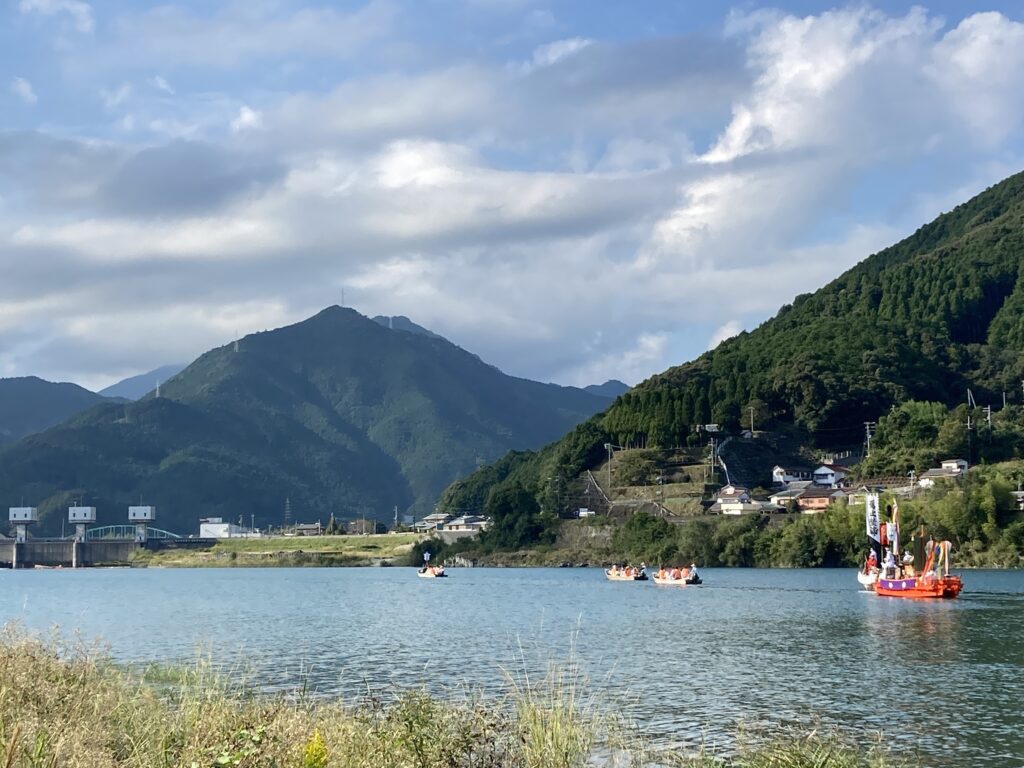
そしてその神が最初に降臨したとされる神倉神社とゴトビキ岩。
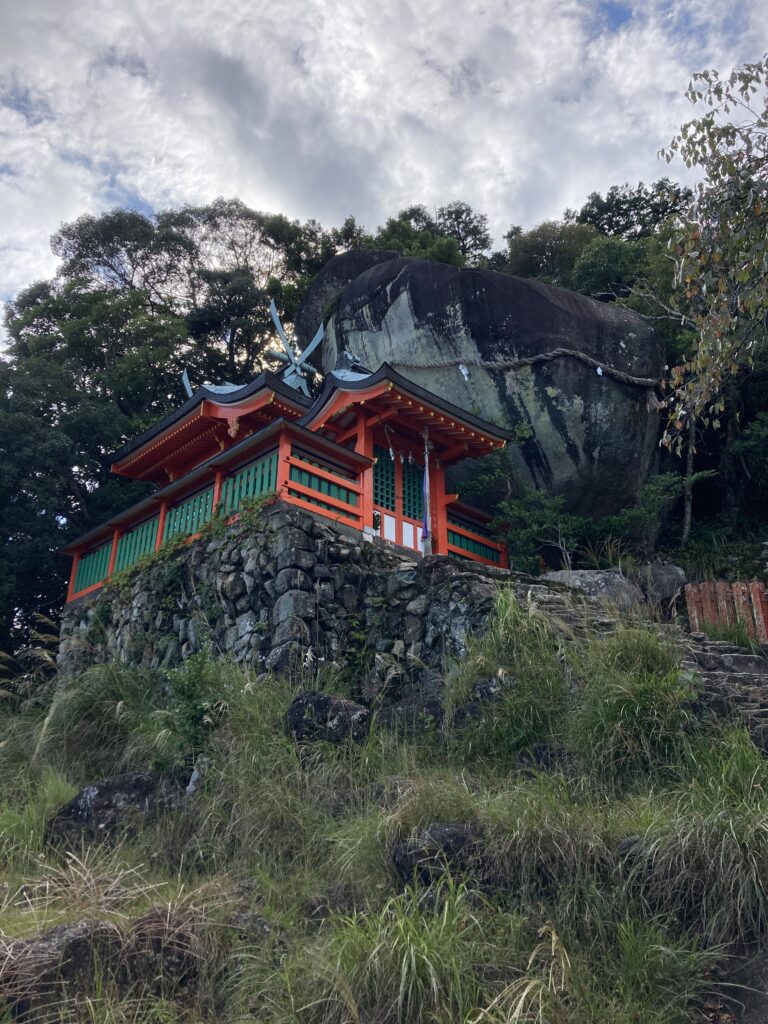
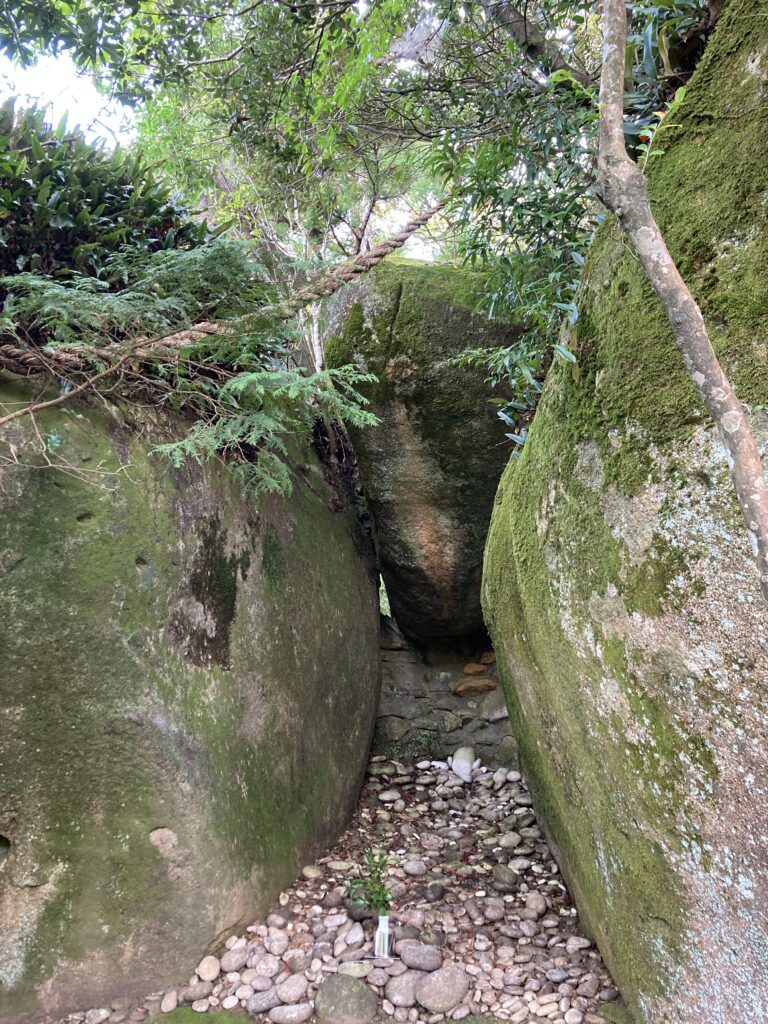
源頼朝が寄進したという、自然石で組み上げられた非常に急な階段538段を登った先にあり、そこからの眺めも素晴らしい。
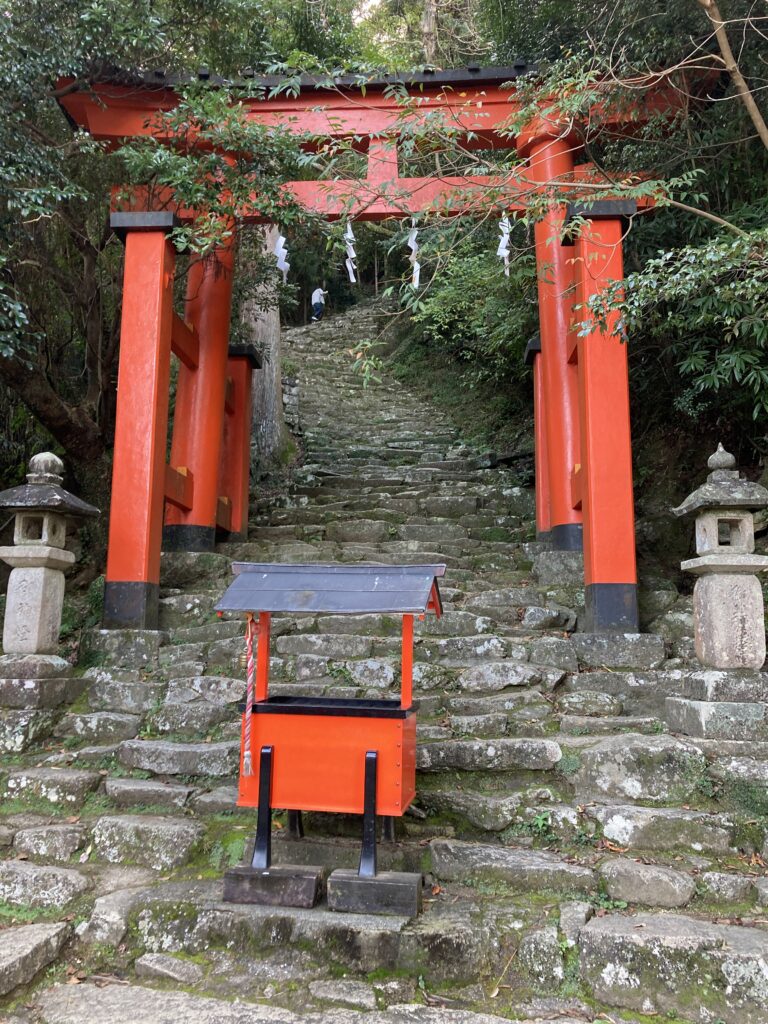
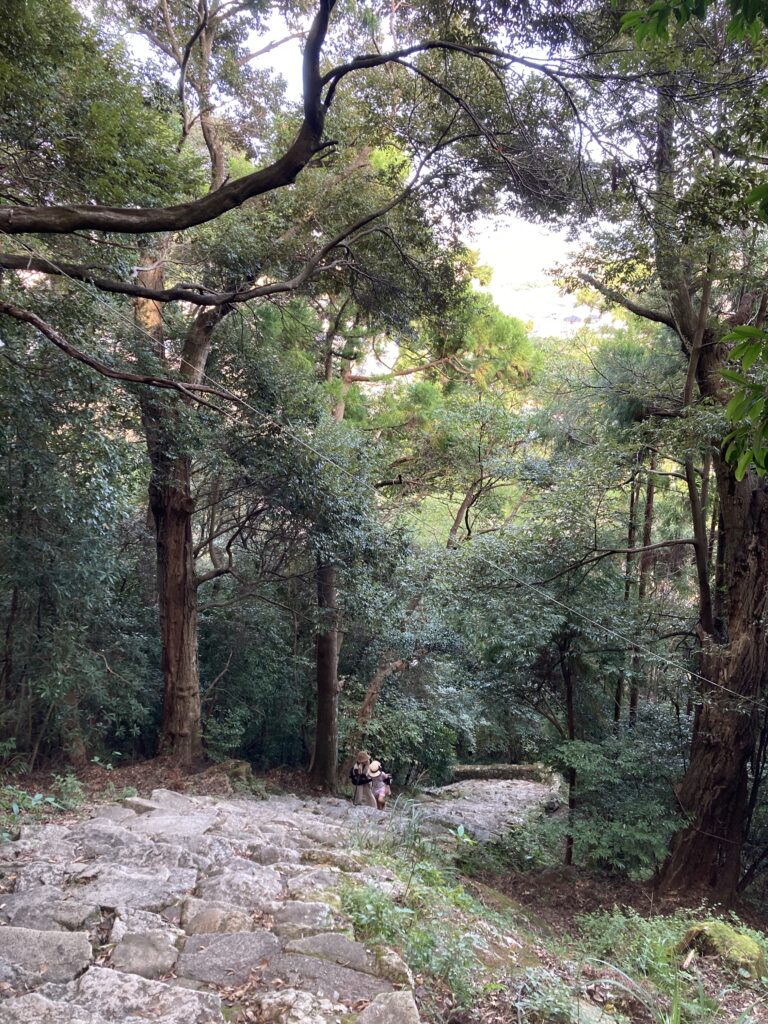
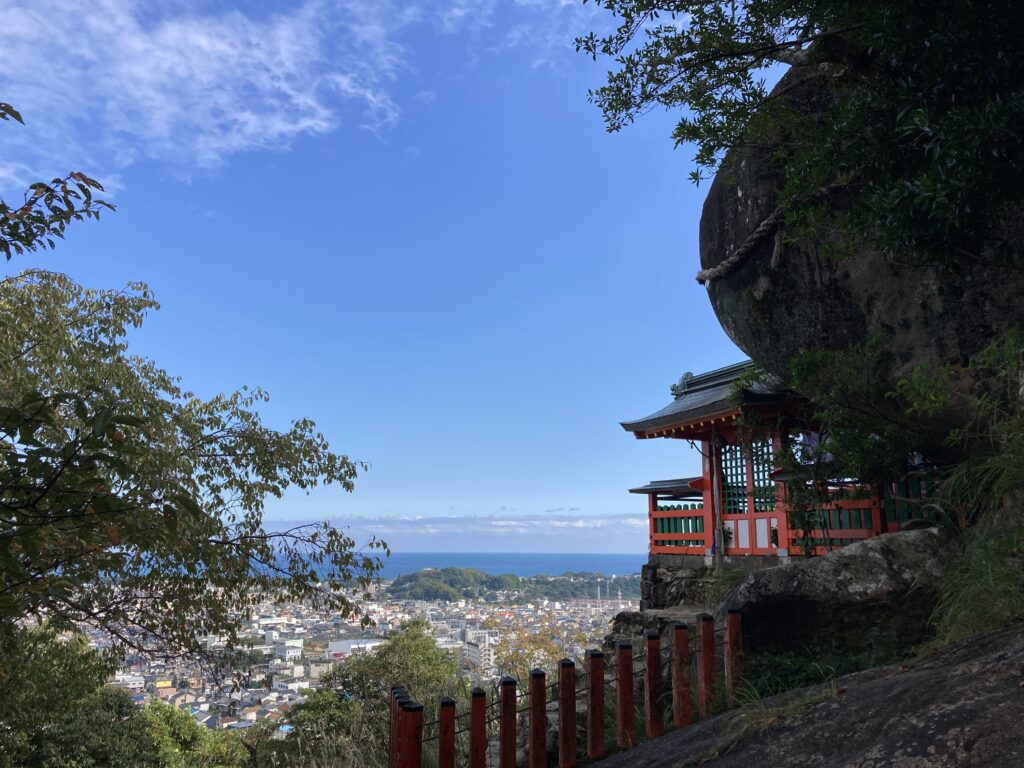
There are many other places to see in Shingu, so it would be a good idea to take some time for sightseeing.
Since we arrived in the morning, we were able to take a good look at some of them, so I will introduce some of them to you.
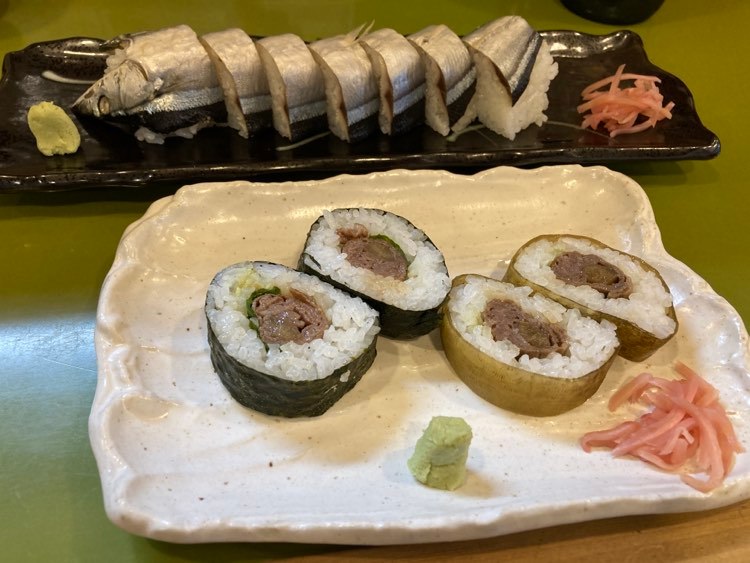
Sanma-zushi, one of the specialties here, in its original form, is a familiar sushi dish that has been made in households for festivals and New Year’s dishes since ancient times, and is said to have evolved from a preserved food, with a history of over 1,500 years in the Kumano region.
The rolls below are Norimaki (seaweed rolls) and Kombu (kelp rolls) of Kumano beef, a specialty of Wakayama Prefecture and another specialty of this restaurant.
In 2016, Asuka Shrine was added to the World Heritage List.
The shrine has been dedicated to the deities of Kumano Sanzan since ancient times, and has been called ” Asuka Oji” since the Heian period (794-1185). In its precincts, traces of pit houses and ritual tools from the Yayoi period have been found, suggesting that it has been a sacred place since ancient times.
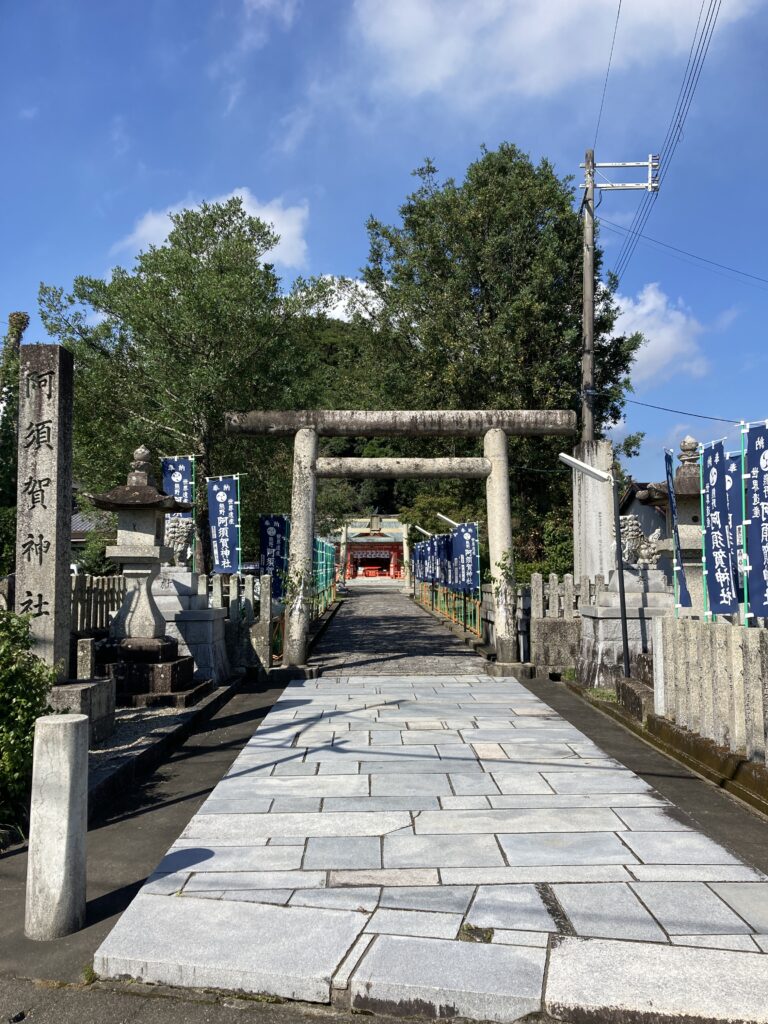
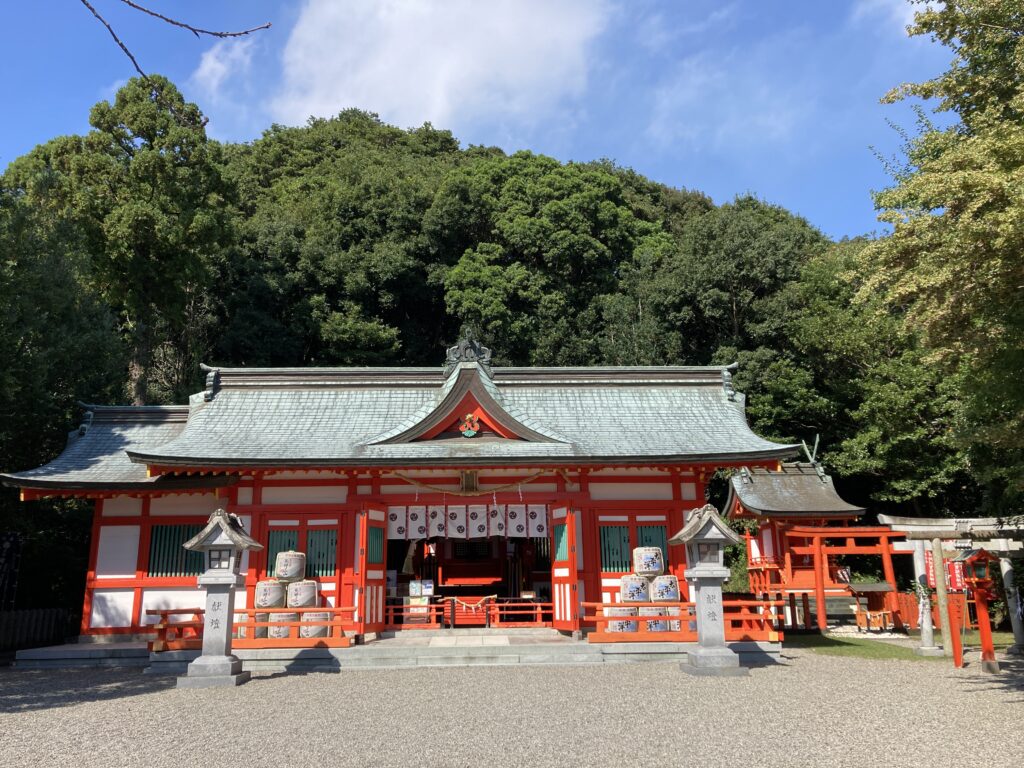
It is also called “Tankaku Castle” because it was originally the home of Princess Tankaku, the daughter of Minamoto no Tameyoshi.
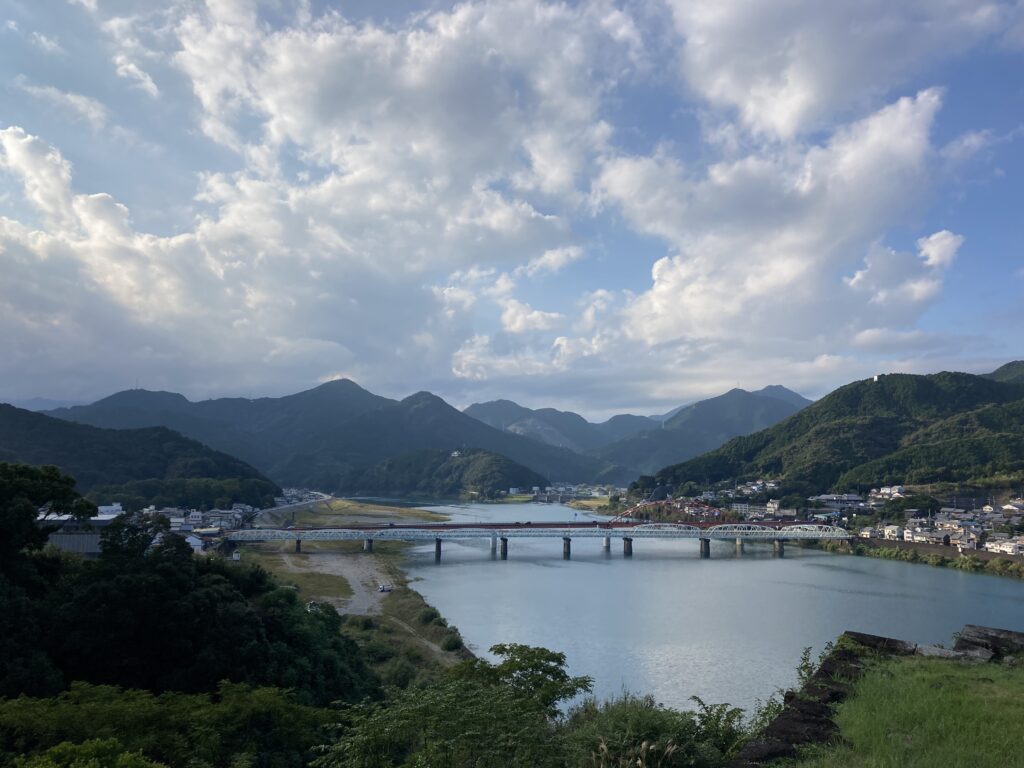
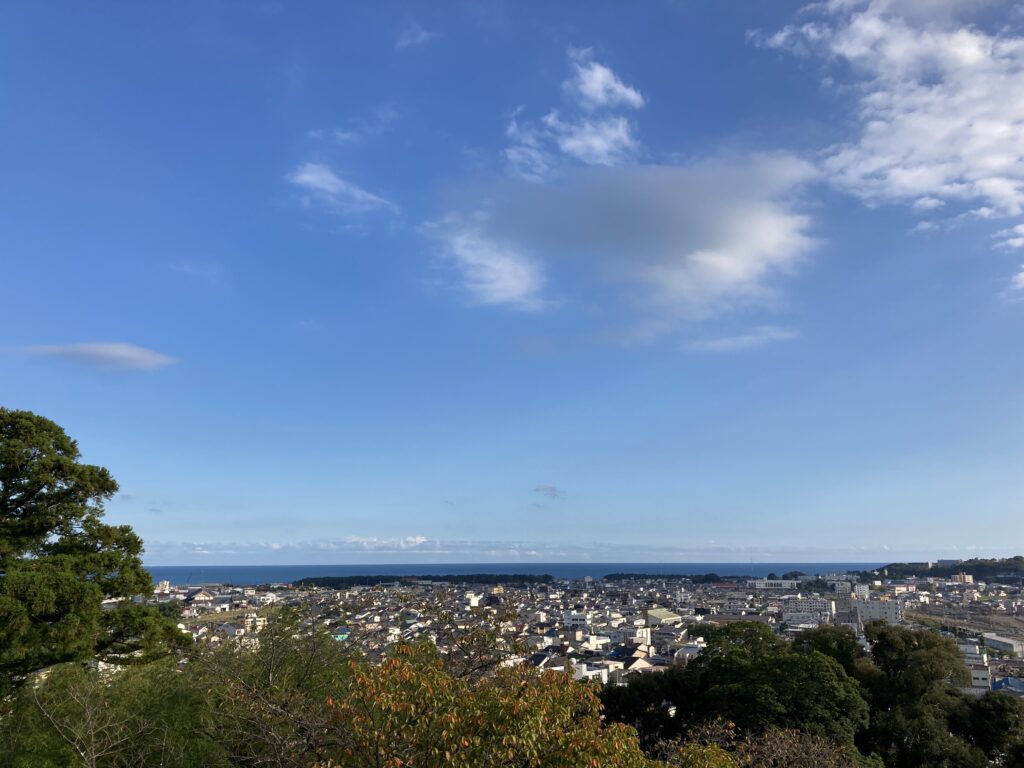
It is part of the Shichiri-Mihama beach stretching to Kumano City in Mie Prefecture, and the Kumano Kodo follows the coastline for about 4km. It is also known as a sacred place for ritual purification.
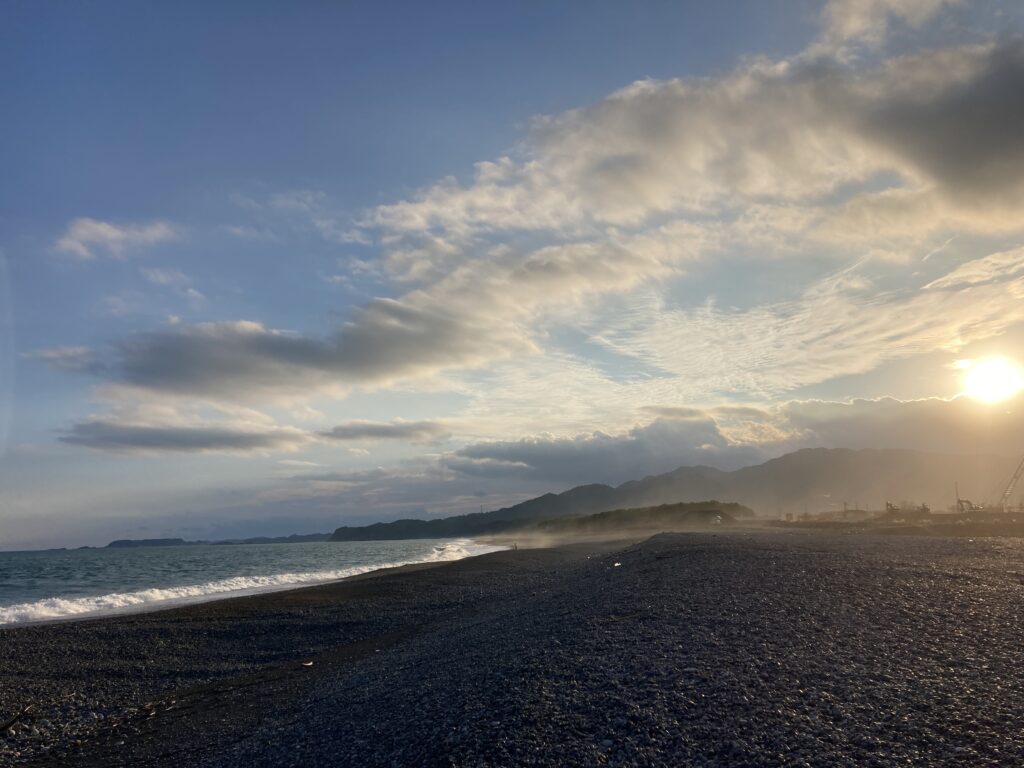
Our goal was to reach the last of the three Kumano mountains, Kumano Nachi Taisha Shrine.
Since we had spent a lot of time sightseeing the day before, we walked quickly past the Shingu Castle Ruins, Asuka Shrine, and Hama Oji, which we had already seen. This day’s ancient road-like trail started from Koya-zaka, about 1.5 km long, which crossed the highland along the sea.
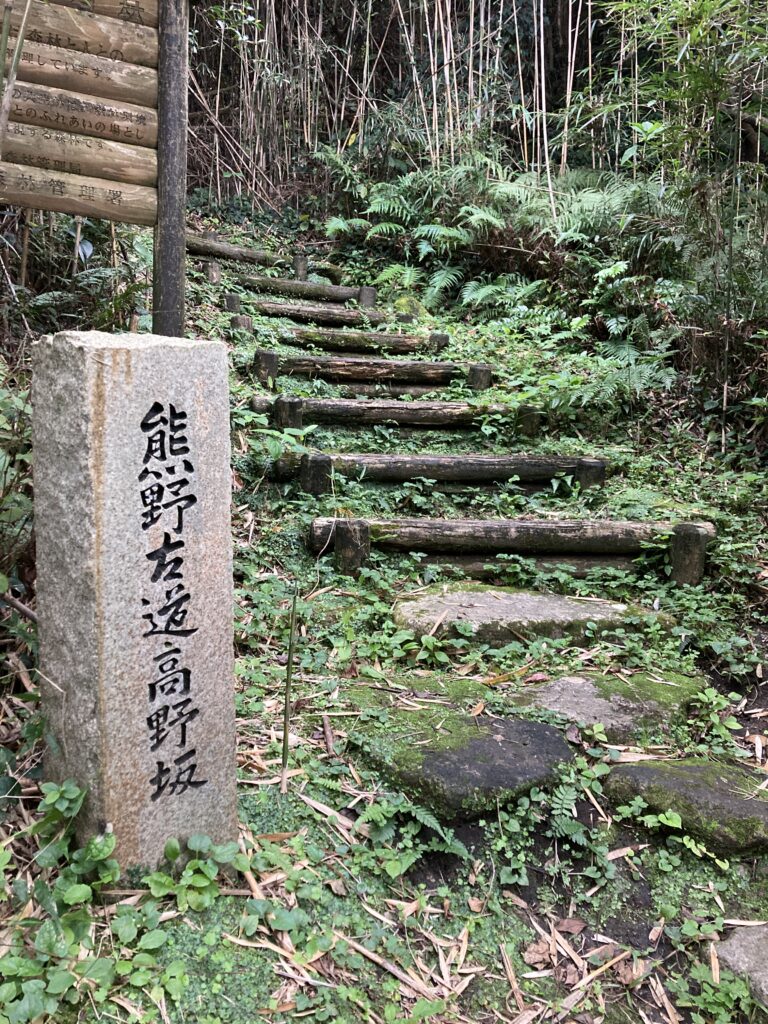
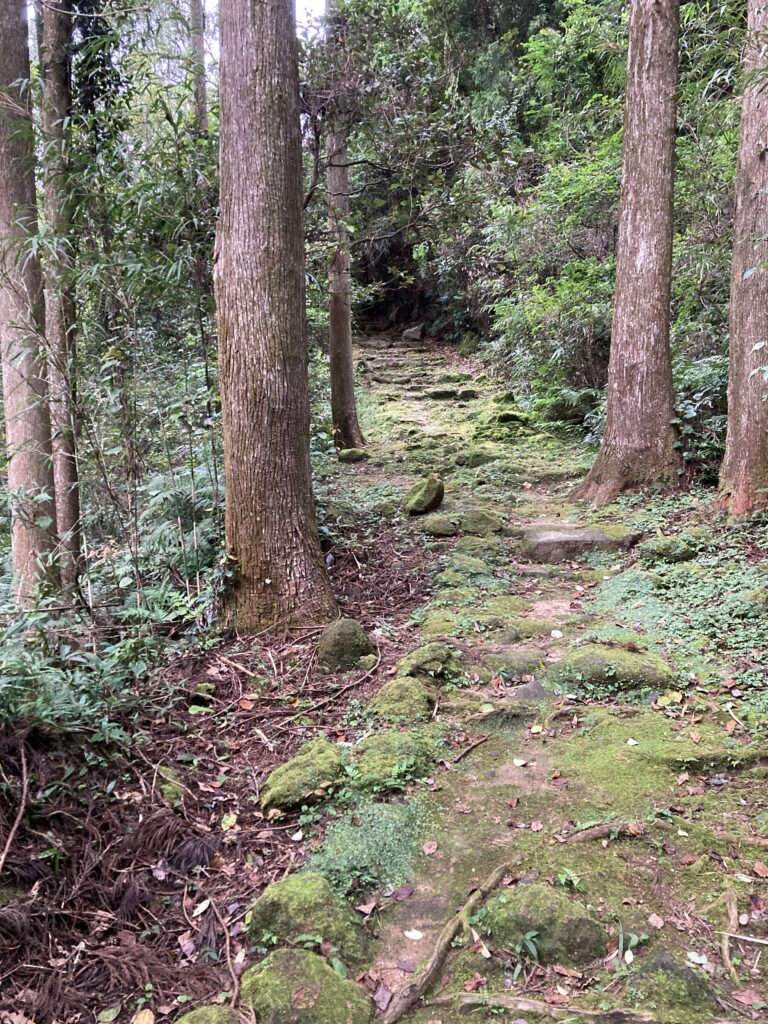
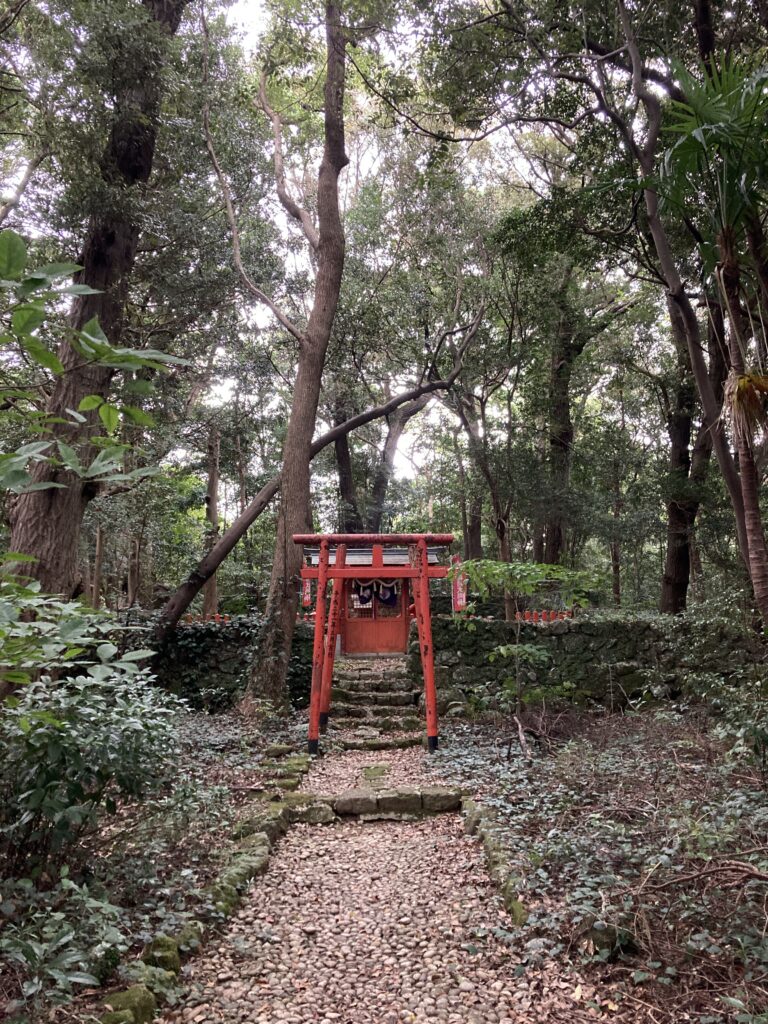
As we descended the pass, we saw the Mitarai Nembutsu monument, Magohachi Jizo, the five-ring pagoda, Konko Inari Shrine, and the whaling watchtower, and reached the Miwazaki coastline.
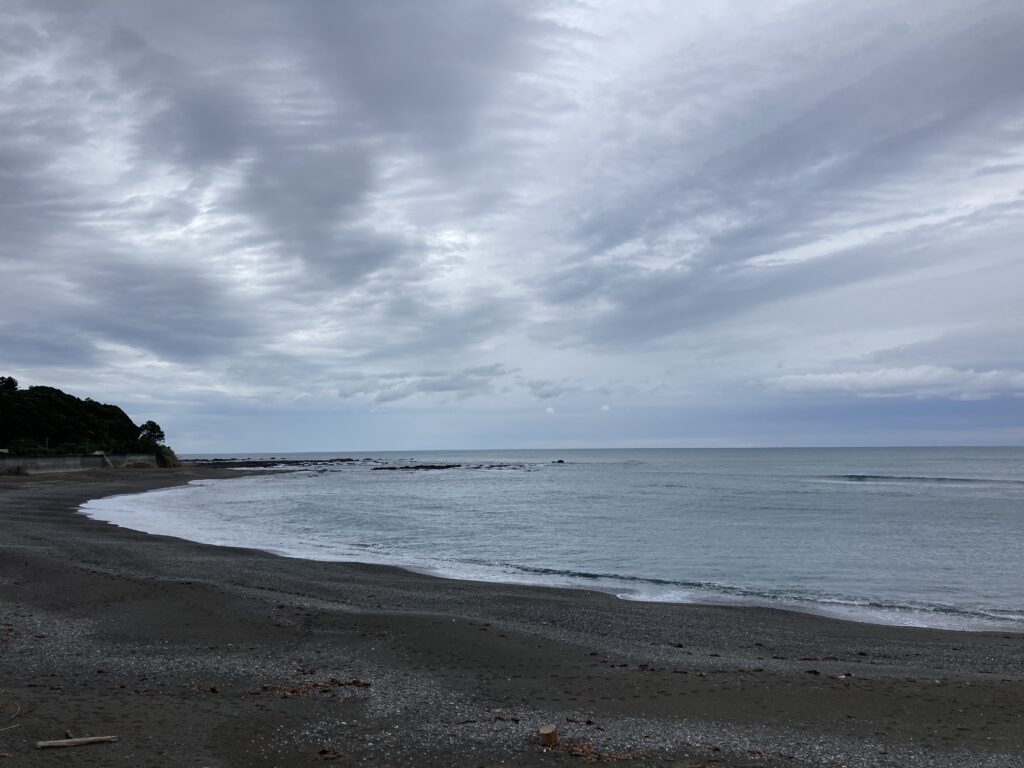
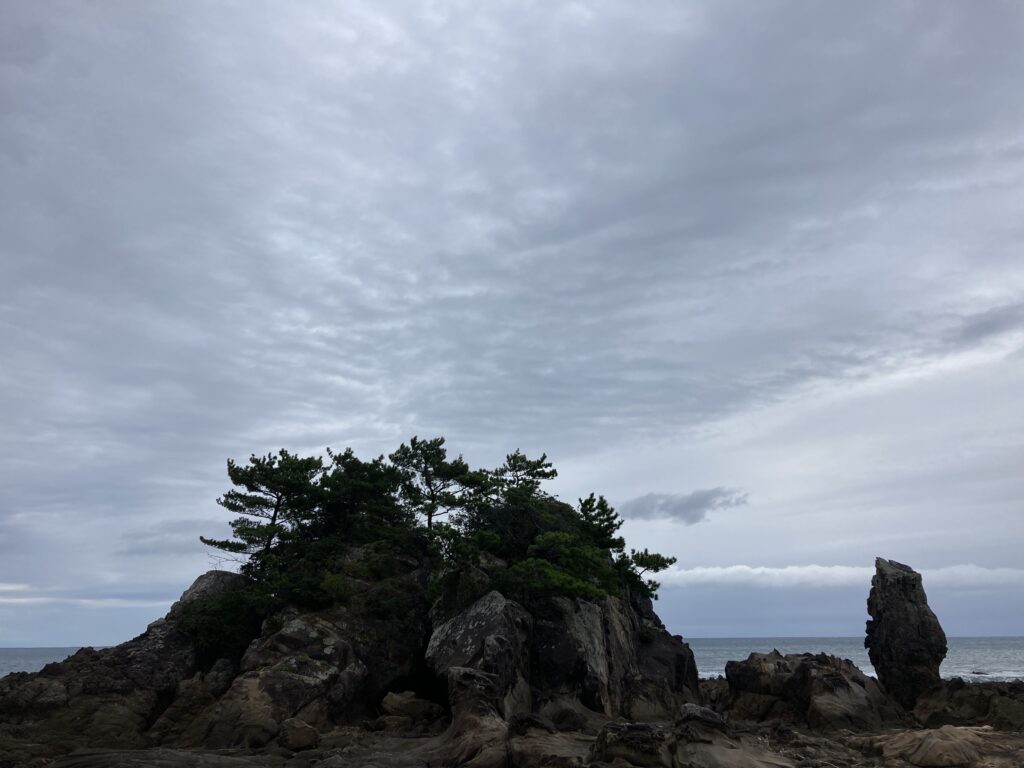
From here to Nachi, there is a lot of walking on the national road, and some of it goes into the old mountain road, but it is not popular and not well maintained, so you can take the train from Miwazaki Station to Nachi Station.
Without hesitation, we went ahead and walked along the national highway, passing through an obscure narrow road in the village.

After crossing the Sano Oji, we climbed and descended a short mountain road that deviated from the national highway, called Kokuji Toge and Ohkuji Toge, and then continued on the national highway, being careful to avoid cars, and finally reached Nachi Station when we saw the Hamanomiya Oji. This alone is about 15km.
From here, it was another 7.5km or 2 hours to Kumano Nachi Taisha with a gradual rise in elevation.
We left our heavy packs in a locker at the station and set off for Nachi-taisha with only the bare minimum of food, wallets, and cell phones.
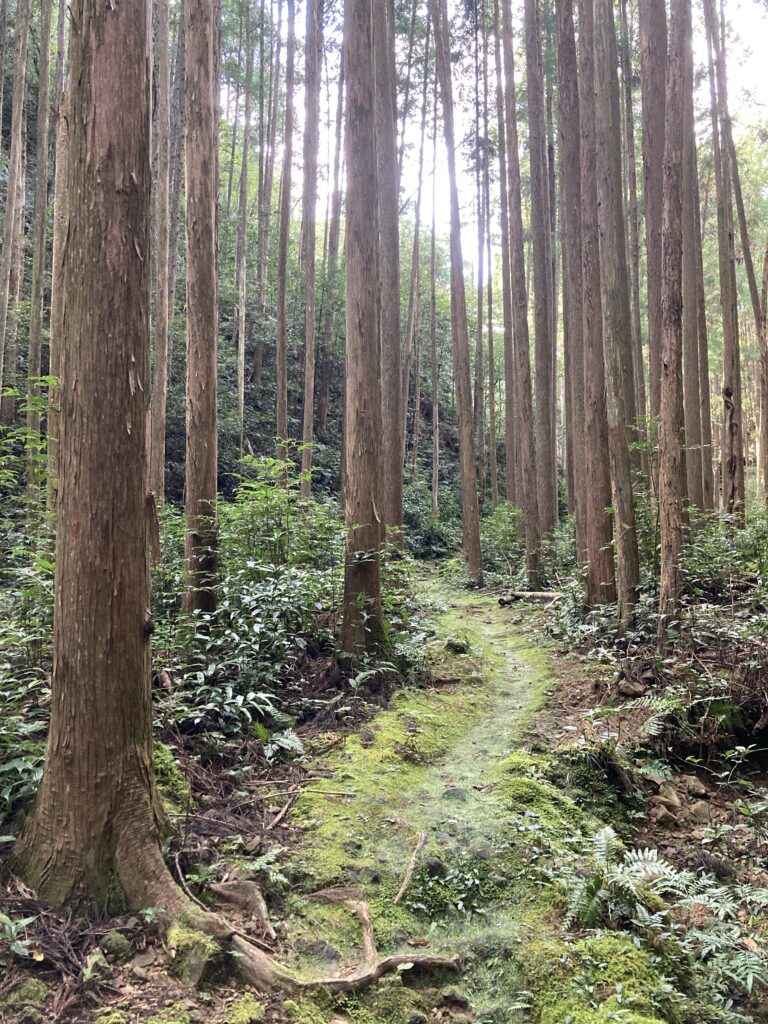
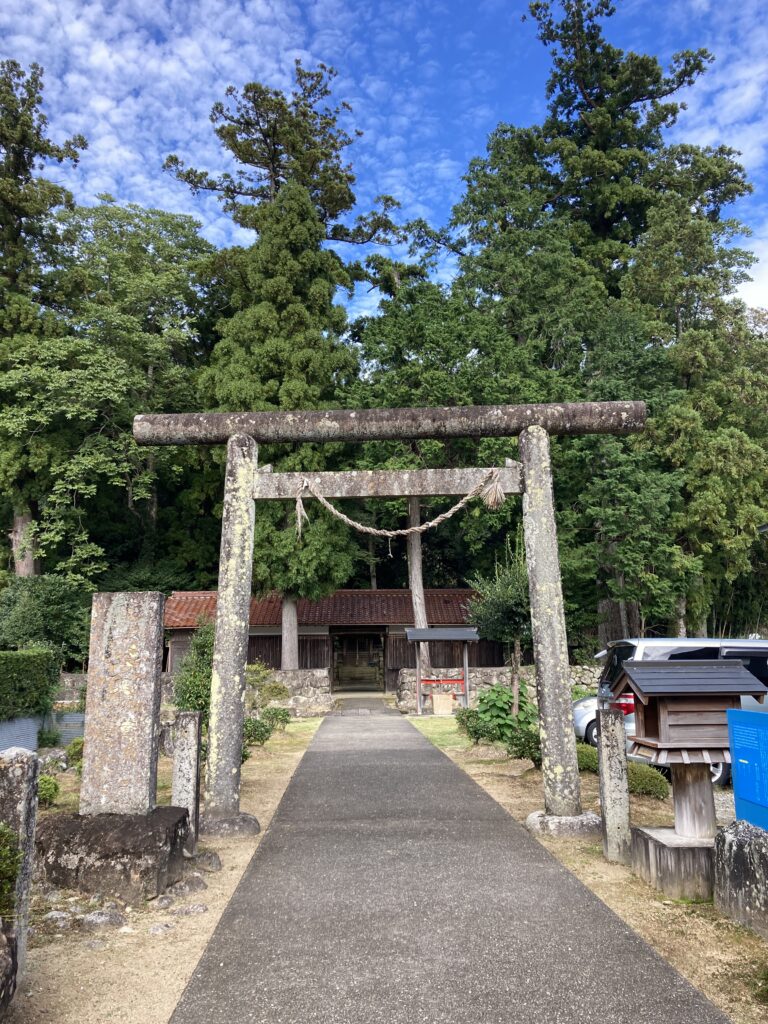
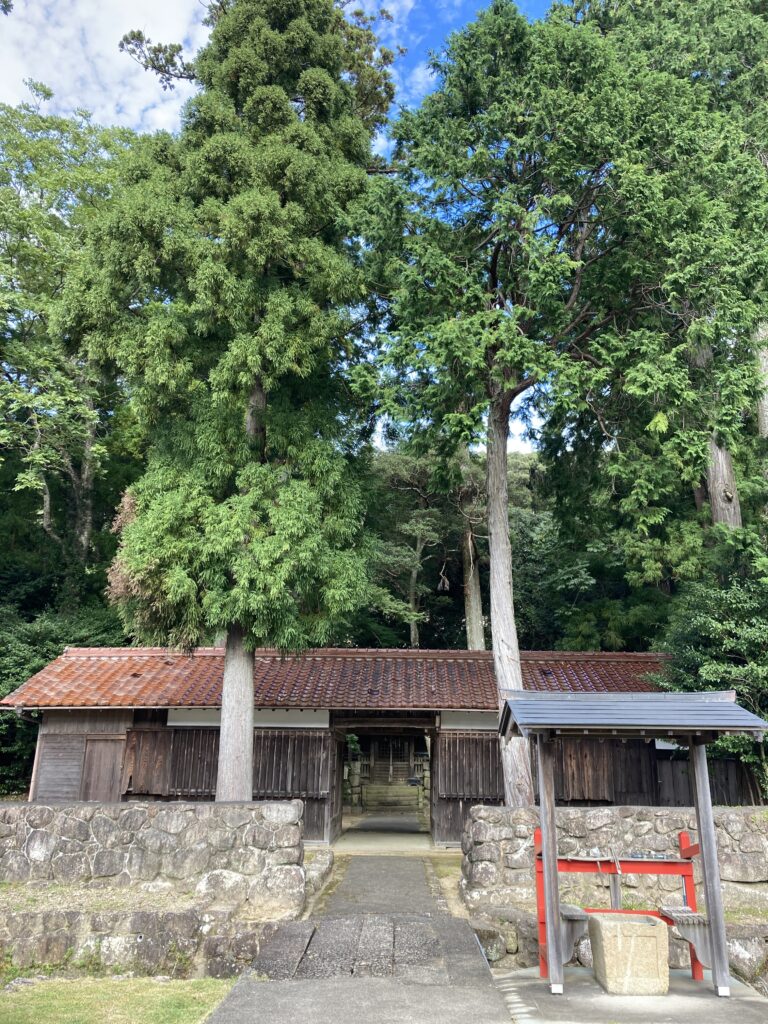
After Ichinono Oji, finally, we reached Daimonzaka. This is one of the most beautiful parts of the Kumano Kodo, and it still retains its original appearance.
If you pass through the torii gate and cross the small bridge called Furigasebashi, you will see…
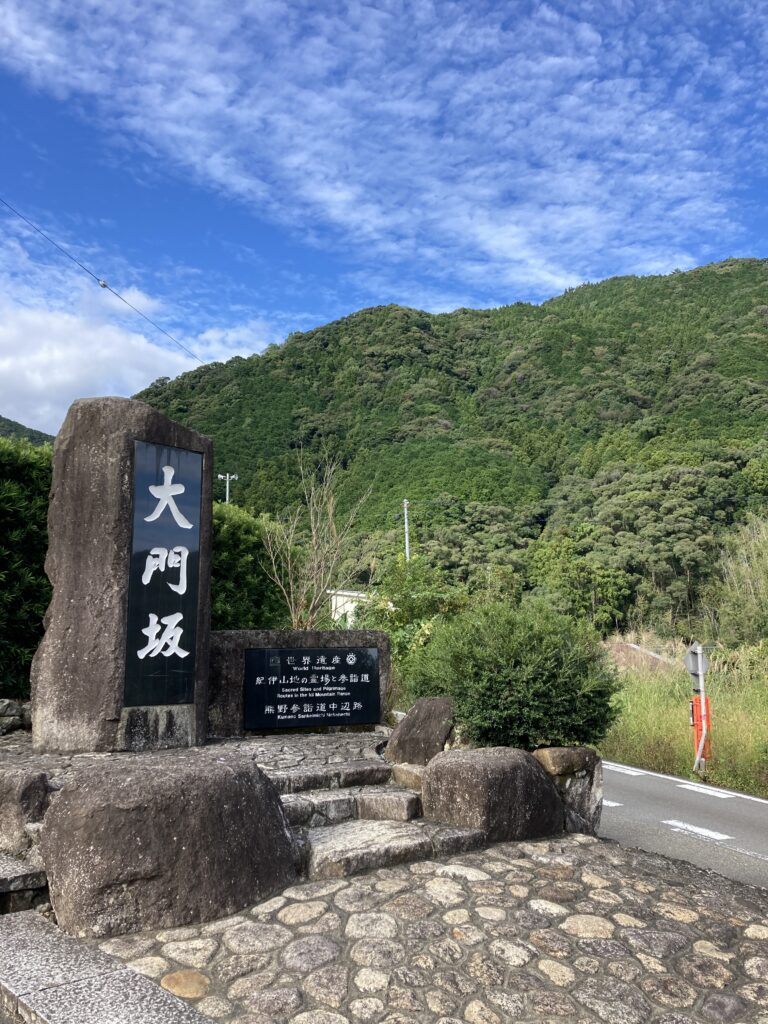
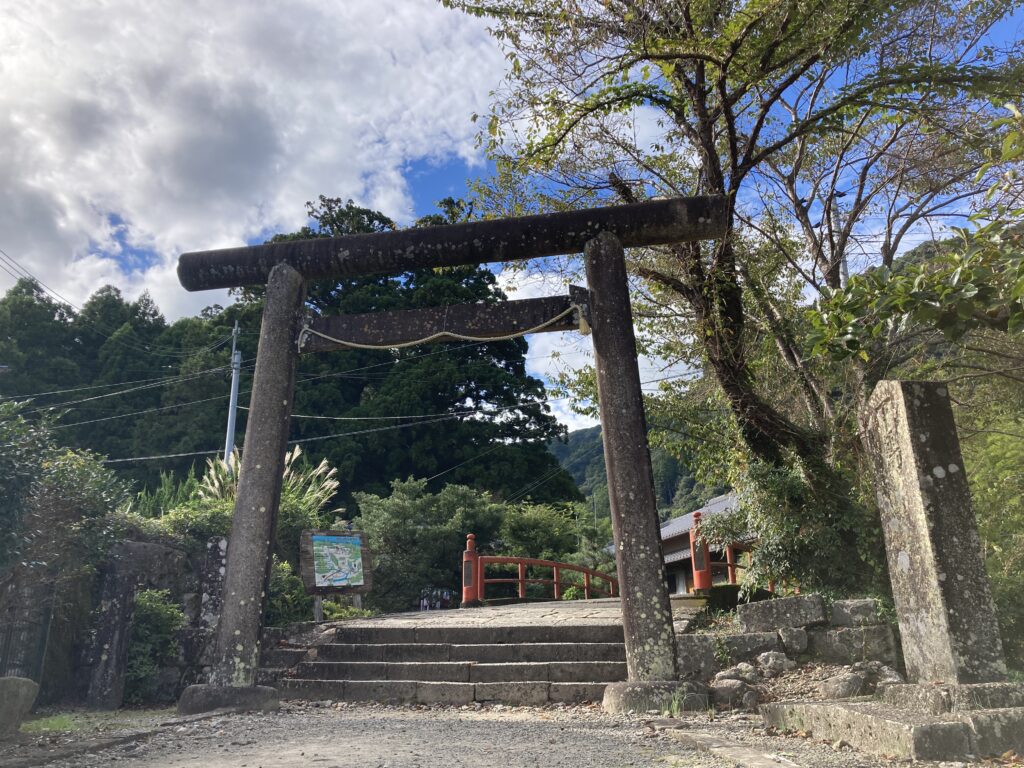
A 640-meter-long stone pavement leading to the sacred site of Mt, Nachi appears.
The mossy stone steps lined with giant cedar trees over 800 years old remind us of the Kumano pilgrimage in ancient times.
After passing the Tafuke Oji and climbing up the stone steps, you will see the Kumano Nachi Taisha, the last of the three holy shrines of Kumano.
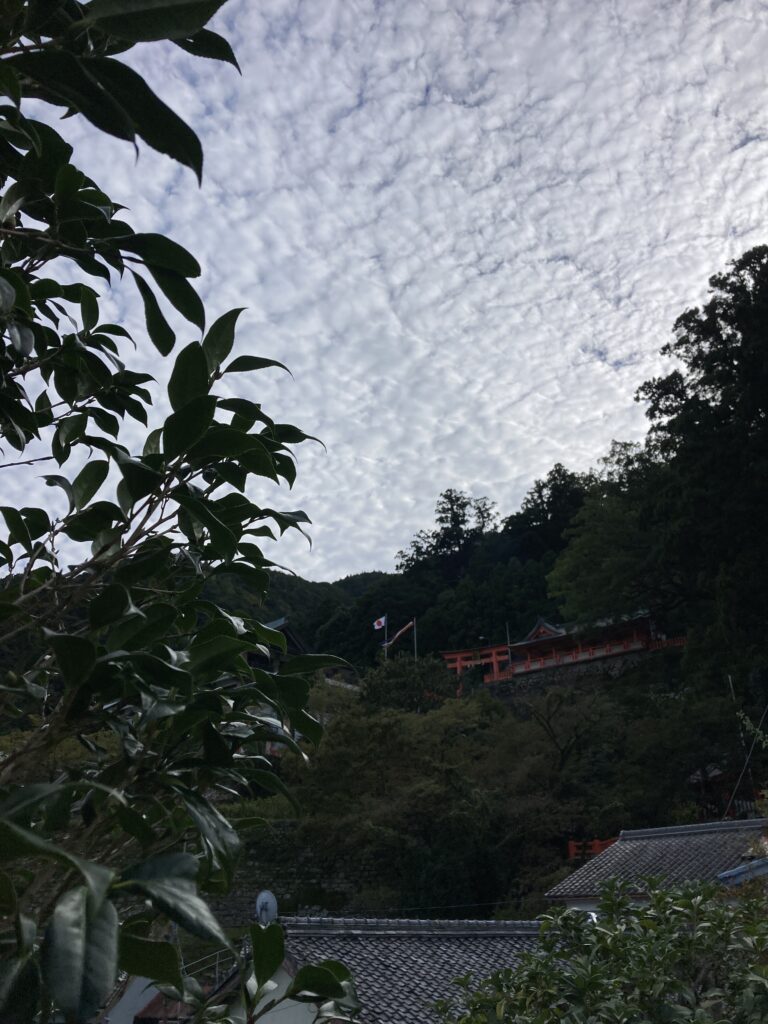
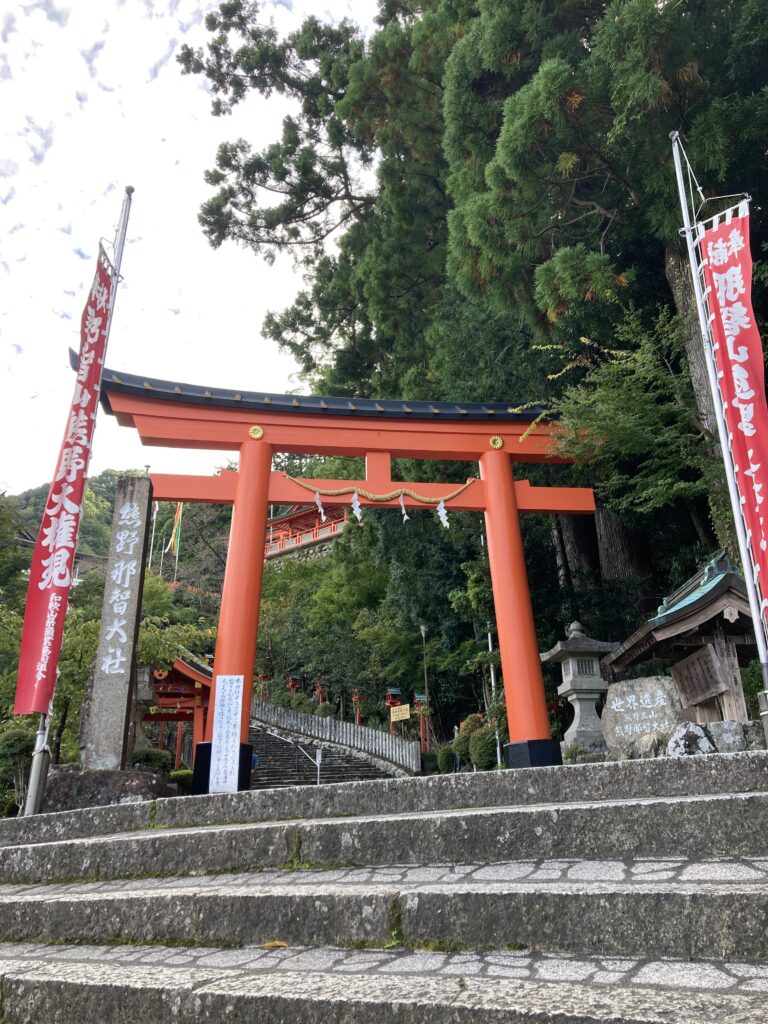
The shrine, which sits in the middle of Mt. Nachi and has its origins in the primitive nature worship of Nachi Otaki (Nachi Falls), is like an aerial city.
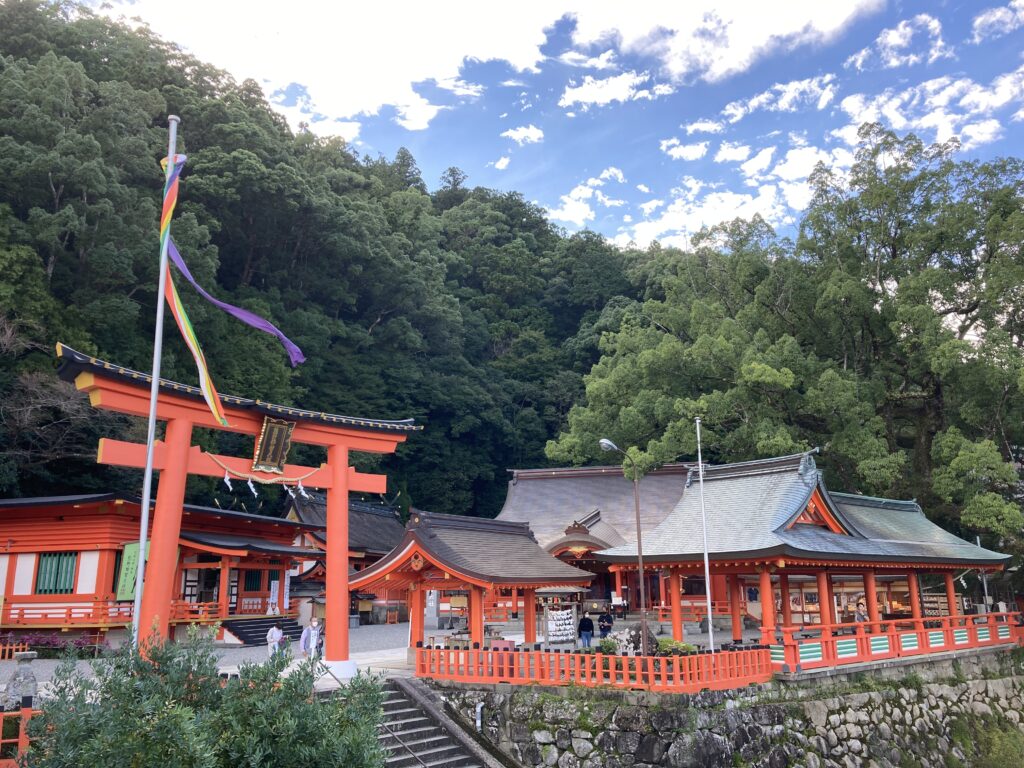
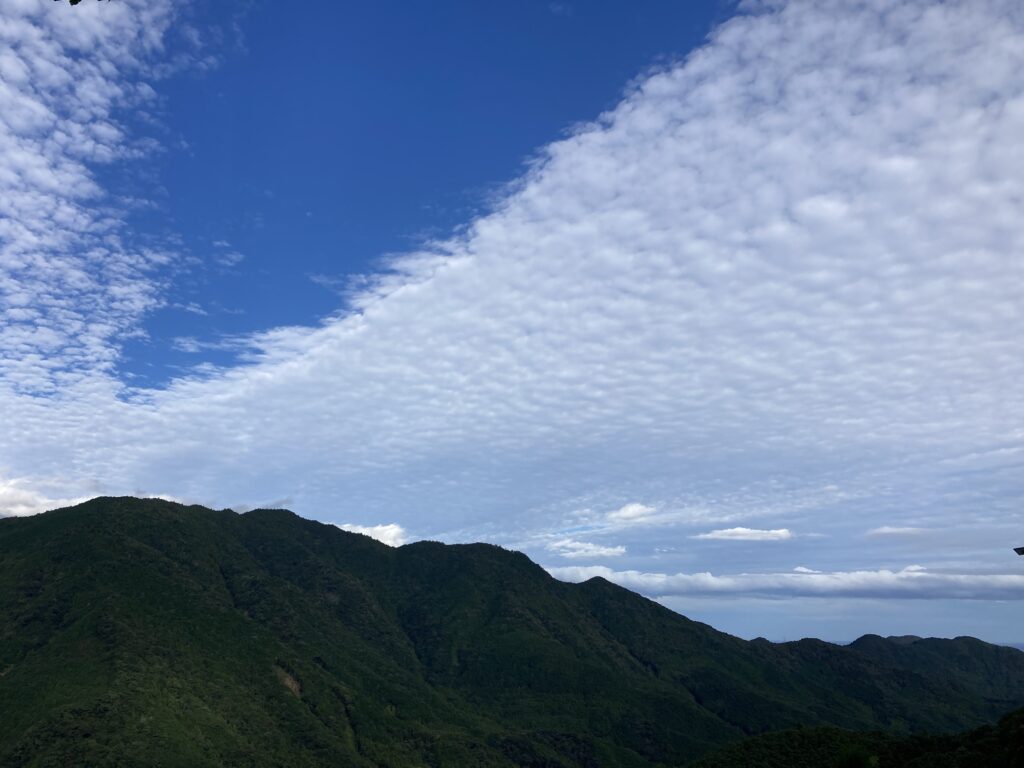
Seigantoji Temple, which came to be closely associated with Kumano Nachi Taisha Shrine in the process of Shinto-Buddhist syncretism, is also the first temple of the 33 sacred places in the western Japan.
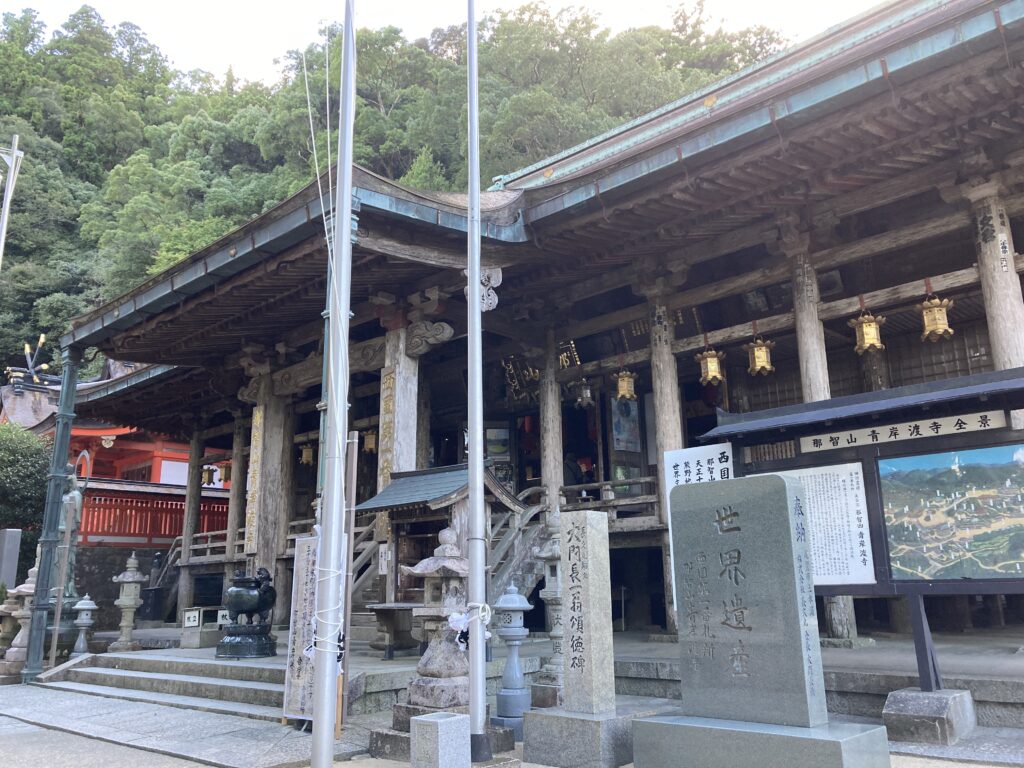
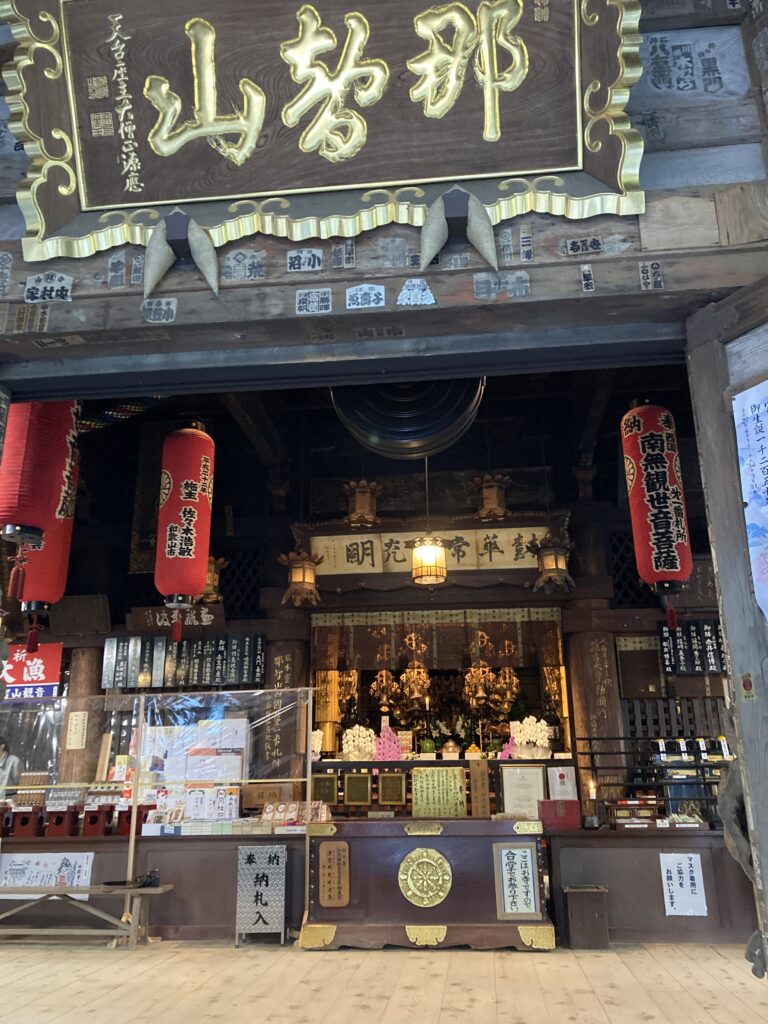
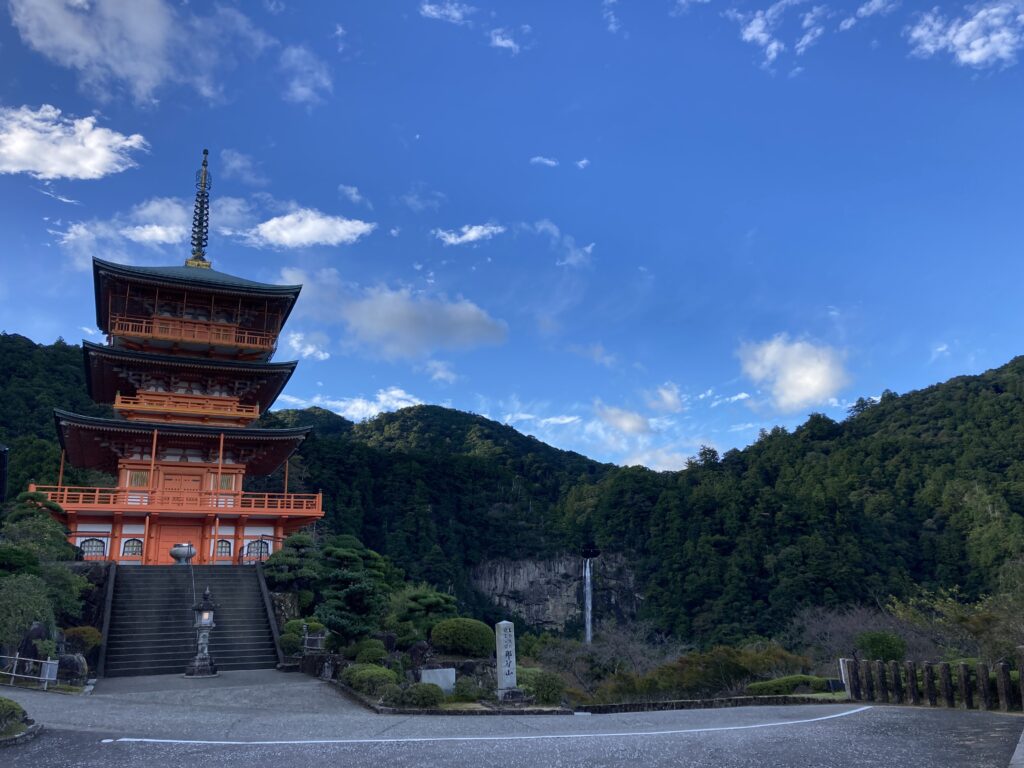
With a drop of 133 meters, a width of 13 meters at the mouth of the waterfall, and a depth of 10 meters at the bottom of the waterfall basin, the Nachi Waterfall, the largest waterfall in Japan, is the origin of the beliefs of Nachi Taisha Shrine, and has been worshipped as a god since ancient times, and is considered to be the very body of the deity of Tobitaki Shrine, a separate shrine of Kumano Nachi Taisha Shrine.
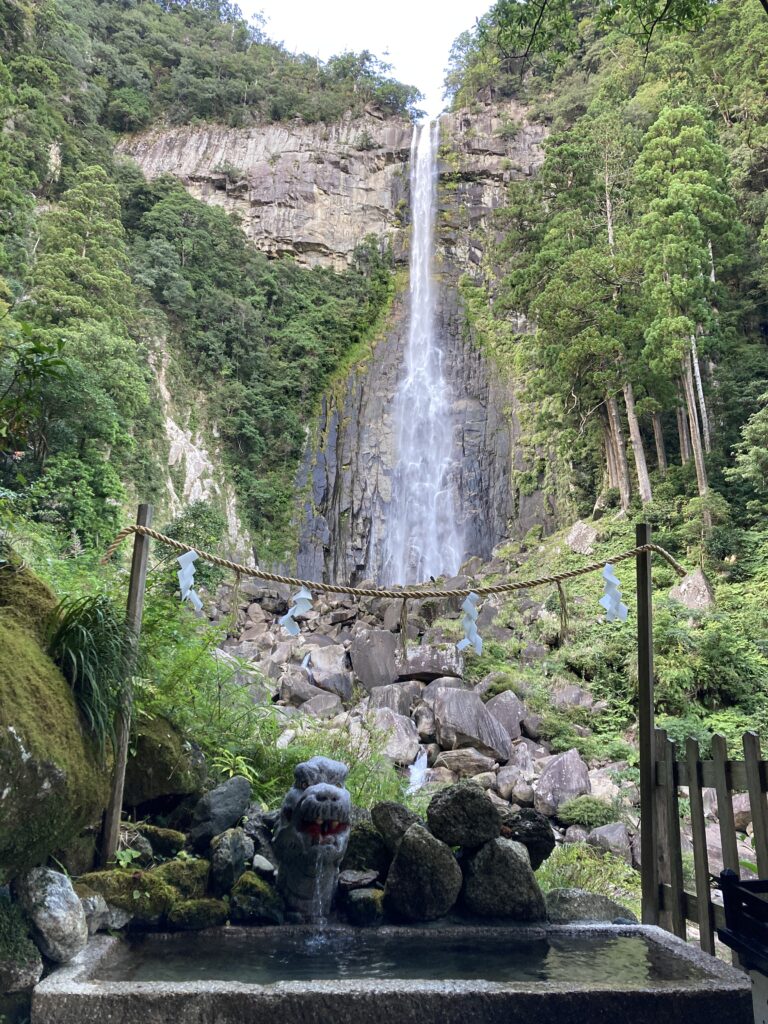
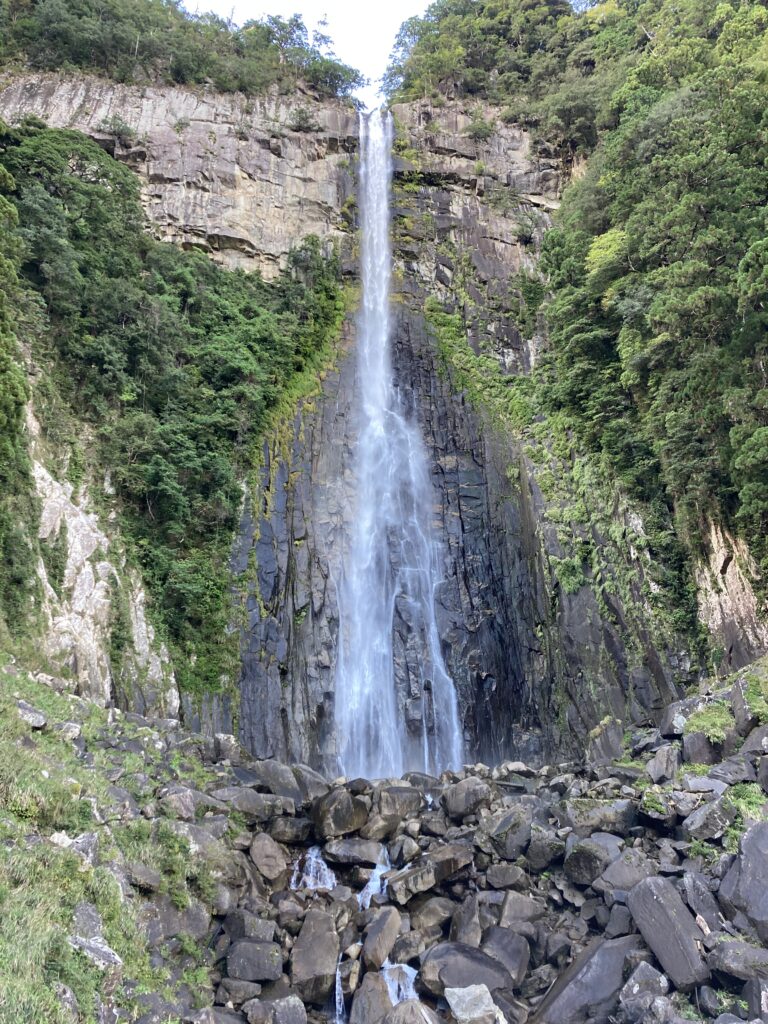
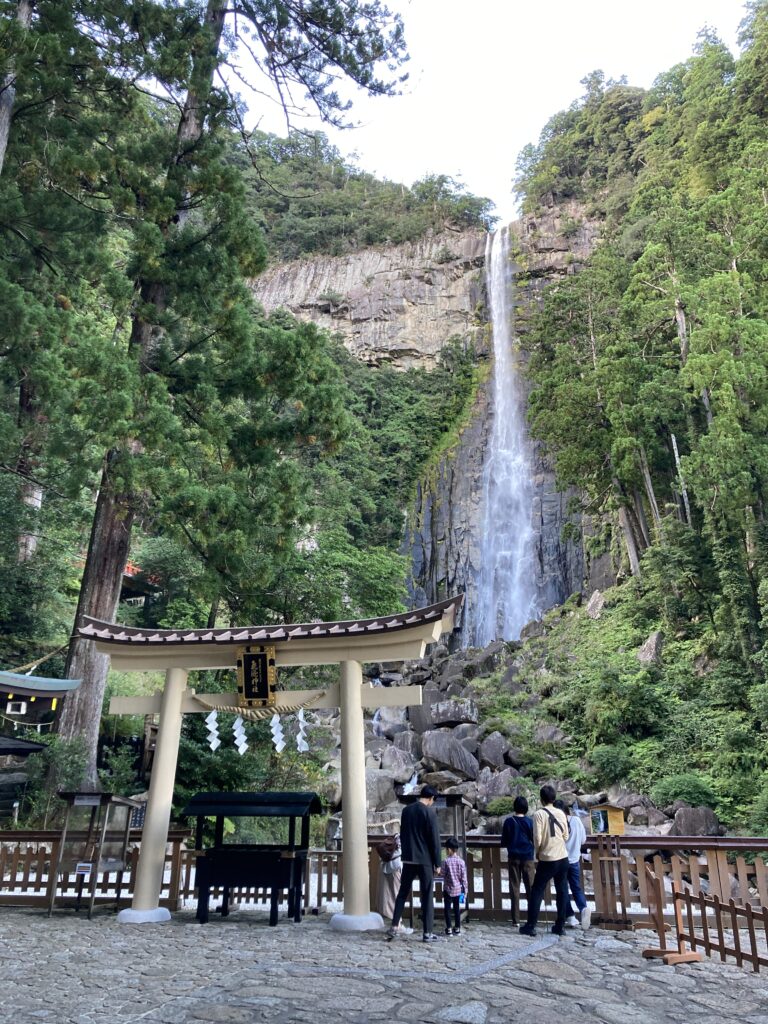
Just as Nachi Falls is the deity of Kumano Nachi Taisha Shrine, as already mentioned, Kumano Hayatama Taisha Shrine has Gotobiki Rock on Mt. Kamikura, and Kumano Hongu has the surrounding rivers and riverbeds as its deities.Waterfalls, rocks, and rivers are enshrined as their respective deities.
Furthermore, Hayatama is said to represent the past, Nachi the present, and Hongu the future, making Kumano a “sacred place of rebirth and renewal” because it heals the past, eliminates fear and anxiety in the present, and creates joy in the future. These are the three Kumano mountains.
Over the course of six days, we walked a total of about 80 kilometers, completing all three Kumano mountains in one piece.
However, when you think about the fact that people in ancient times would have traveled about 600 kilometers round trip from the capital of Kyoto and spent a month to visit the temple, it is quite a feat.
The next day, we took a train and bus to visit Kushimoto, the southernmost town on Honshu, and then returned home, reviving and renewing our daily lives with a renewed spirit.
Next time, I would like to walk around Koheji.
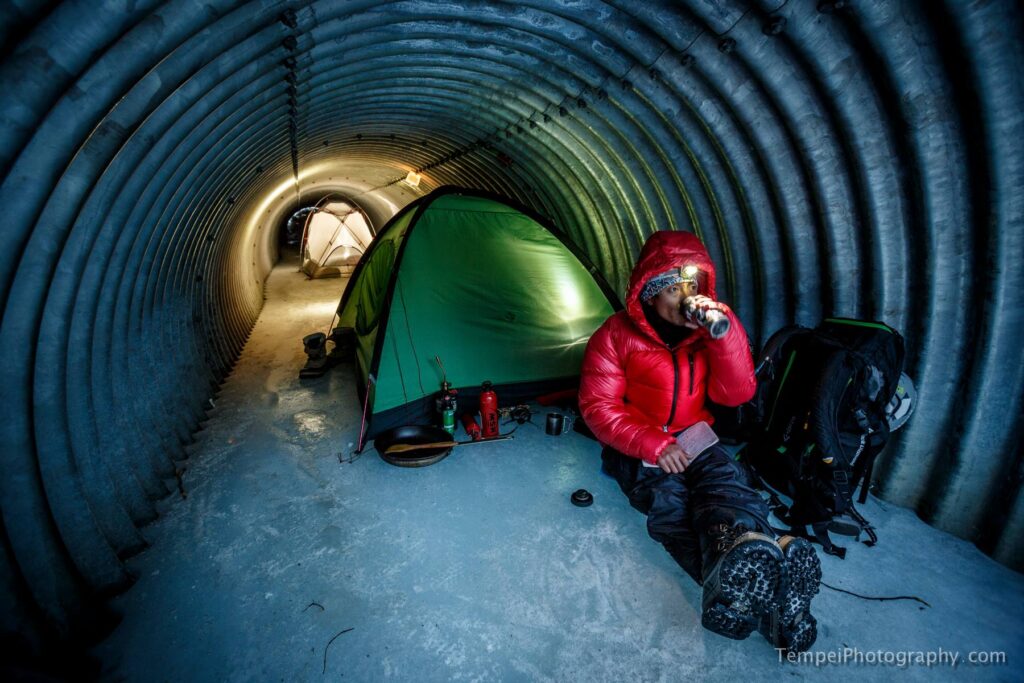
Riki Nakajima
Blog:https://ameblo.jp/rikistyle/
Instagram:https://www.instagram.com/rikinakajima/
Guide Company HP for Winter :https://rikijg.com/jp/
Guide Company HP for Green Season :https://www.rikijapowguide.com
Born in Shiga Prefecture in 1981. While studying in Whistler, Canada, he became a certified CSIA instructor and the first Japanese freeski instructor to receive the CFSA freeski instructor certification. After returning to Japan, he expanded his activities to include backcountry skiing in addition to participating in numerous freeskiing competitions. For the past few years, he has been working at Tomamu Ski Resort in Hokkaido, giving ski lessons, guiding, managing events, and acting as an MC. He also travels abroad every spring to try his hand at high adventure mountain climbing, and expresses his experiences through videos, photos, and events. He is the representative of the guide company “RIKI JAPOW GUIDE”.